Best laser engravers of 2025: My top picks tested for speed and precision
I reviewed the best laser engraving machines for precision, speed, and performance in the home, studio, or workshop
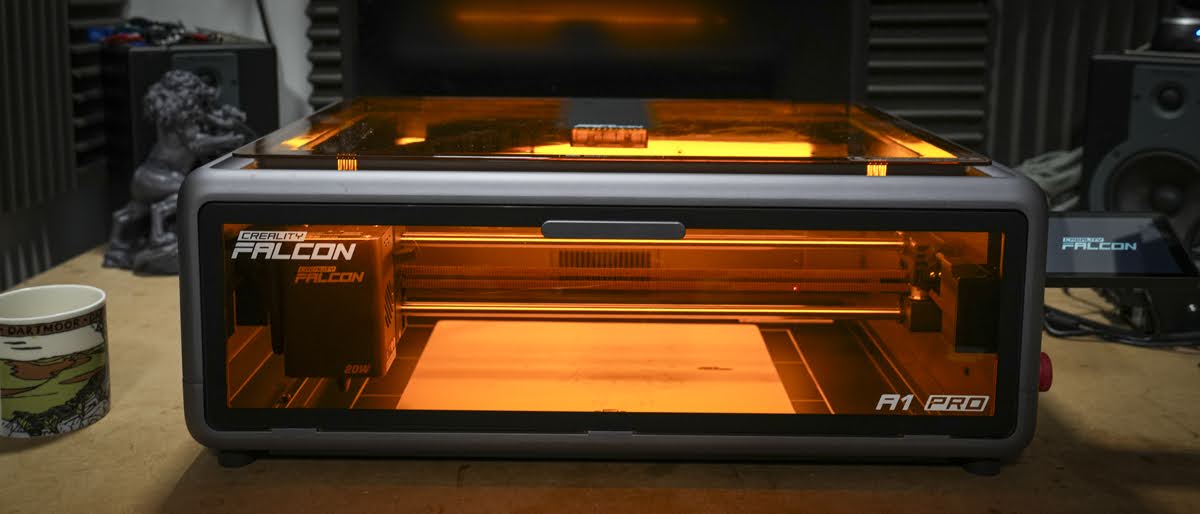
I've tested the best laser engravers - putting each one through their paces in my workshop to select the top-rated units for beginners, hobbyists, businesses, and even my top choice for the classroom.
For most people, I recommend the xTool P2, which is a delight to use. It's packed full of features, and I found it quick and precise enough for just about everybody.
If you're looking for a beginner-friendly model, the Wainlux K10 is a delightfully compact diode laser engraver that won't break the bank, and I recently reviewed the Creality Falcon A1 Pro which is ideal for creating custom crafts.
As a die-hard crafting obsessive, I've reviewed a wide range of the best 3D printers and laser engravers in my workshop. I've tested every model on this list, measuring speed, accuracy, and all the core features for each laser engraving machine, such as built-in cameras and optional extras to check for precise cuts, whether you're engraving in the home, studio, or workshop.
The quick list

Best laser engraver overall
The xTool P2 shows a progression of the technology and is one of two CO2 laser engravers, but it just nudges ahead due to wide compatibility.

Best laser engraver on a budget
The Wainlux K10 is a compact, low-power laser engraver that doesn't cost too much and is a great starter machine for hobbyists and beginners.
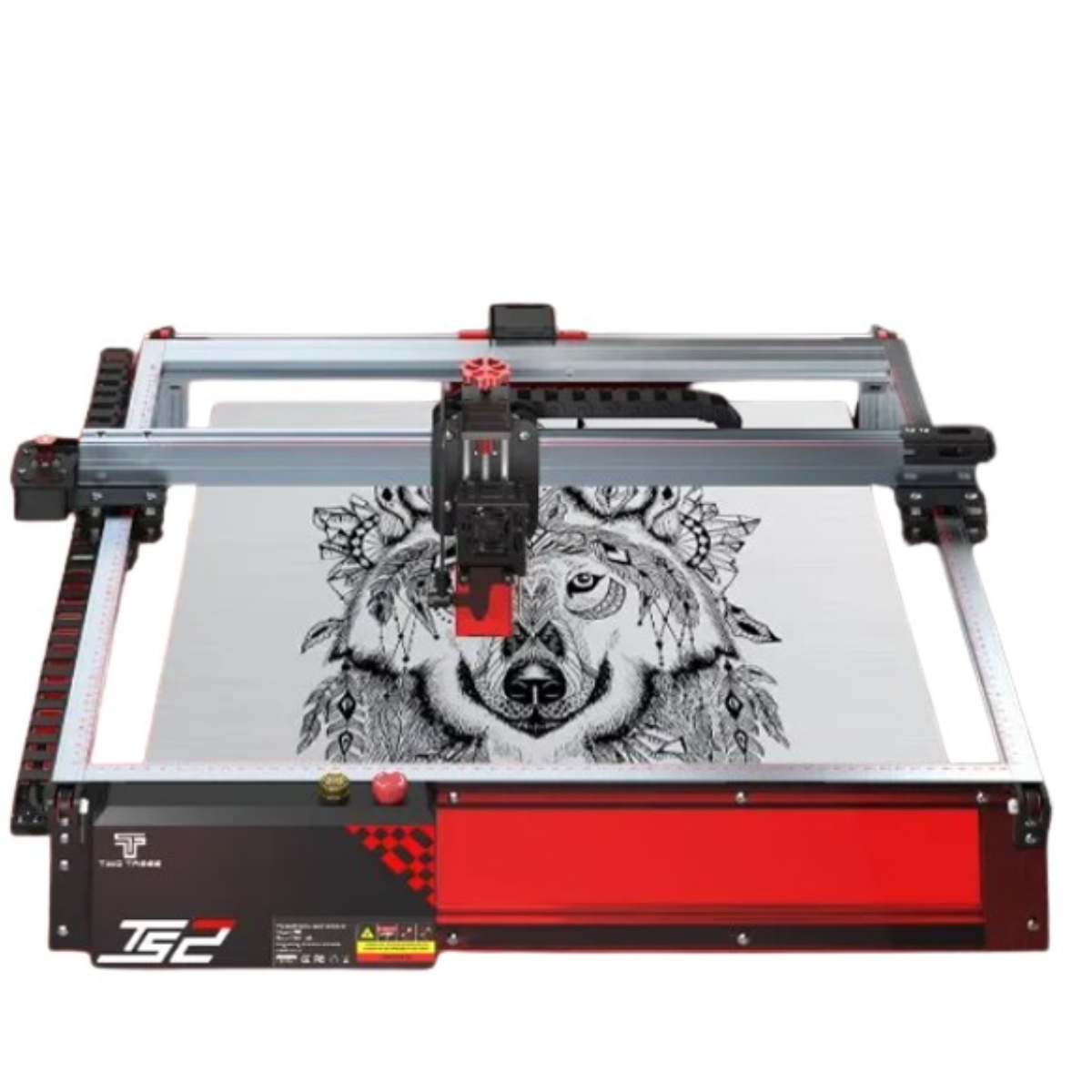
Best laser engraver for beginners
The quality of the build once assembled, makes this laser engraver stand out and packs in the safety features that cheaper models leave out.
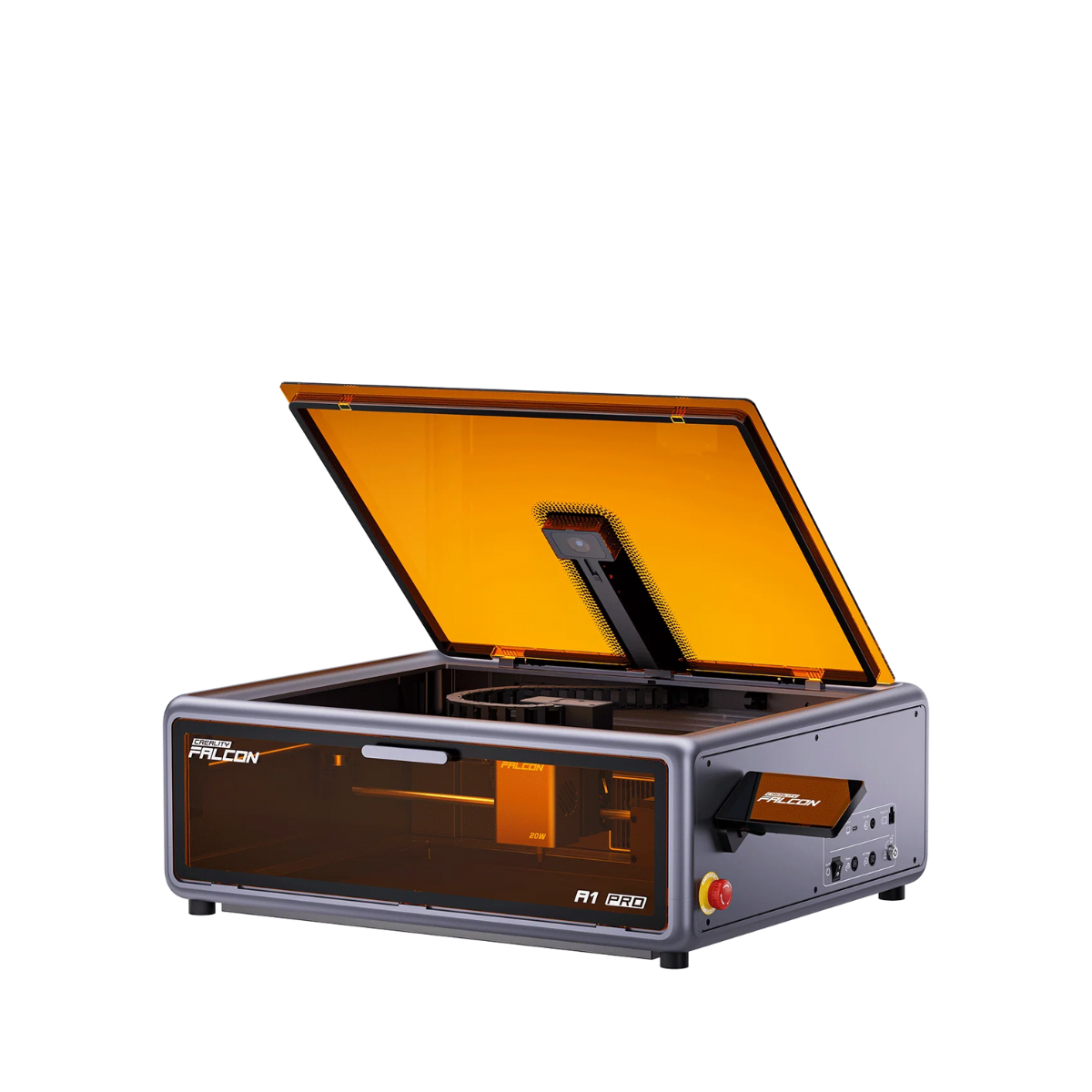
Best laser engraver for crafters
I was seriously impressed with the Creality Falcon A1 Pro, which is compact, versatile, and great for creating custom crafts.
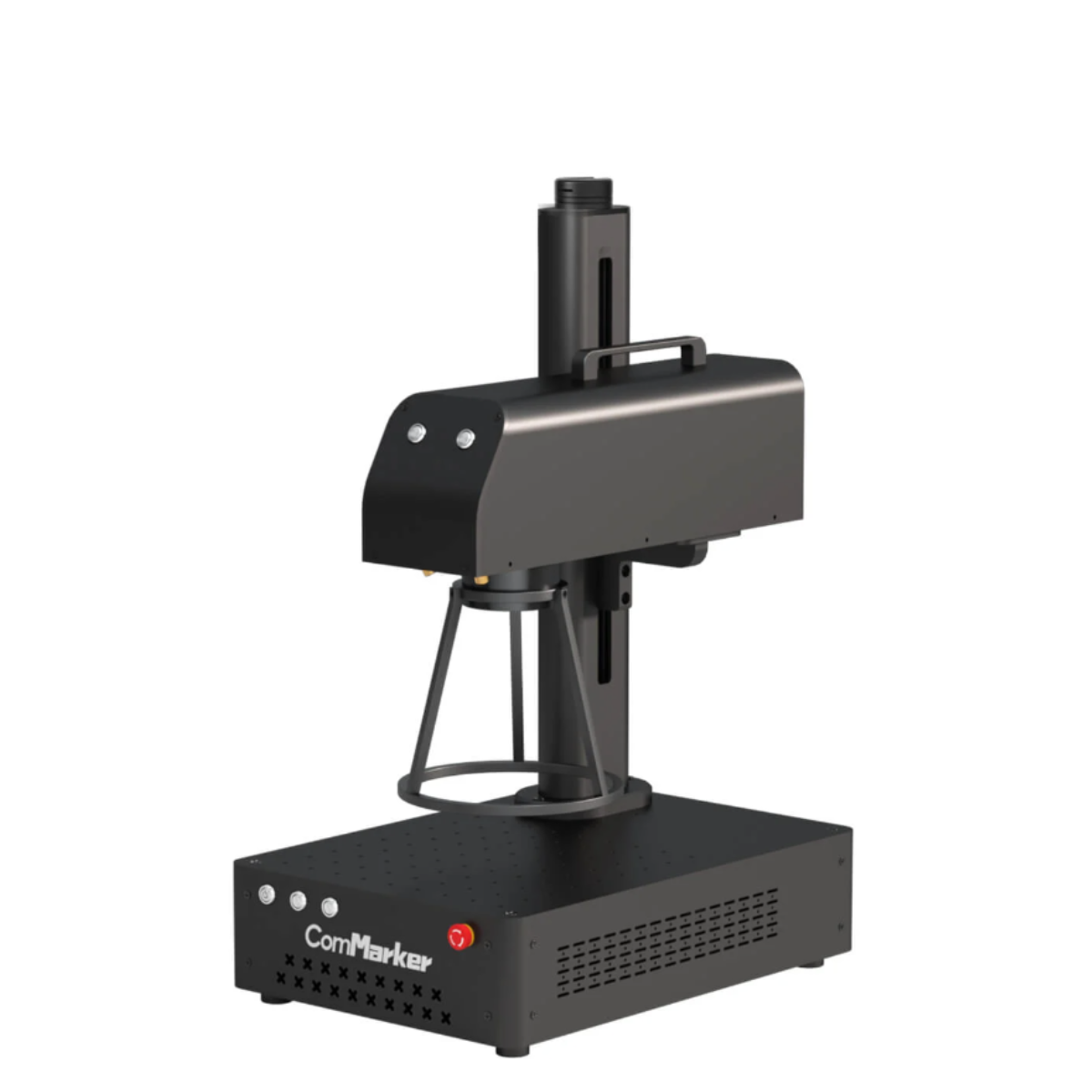
Best laser engraver for small businesses
I found the ComMarker B4 was an affordable, fast, and accurate laser engraver for small production runs for commercial and business use.
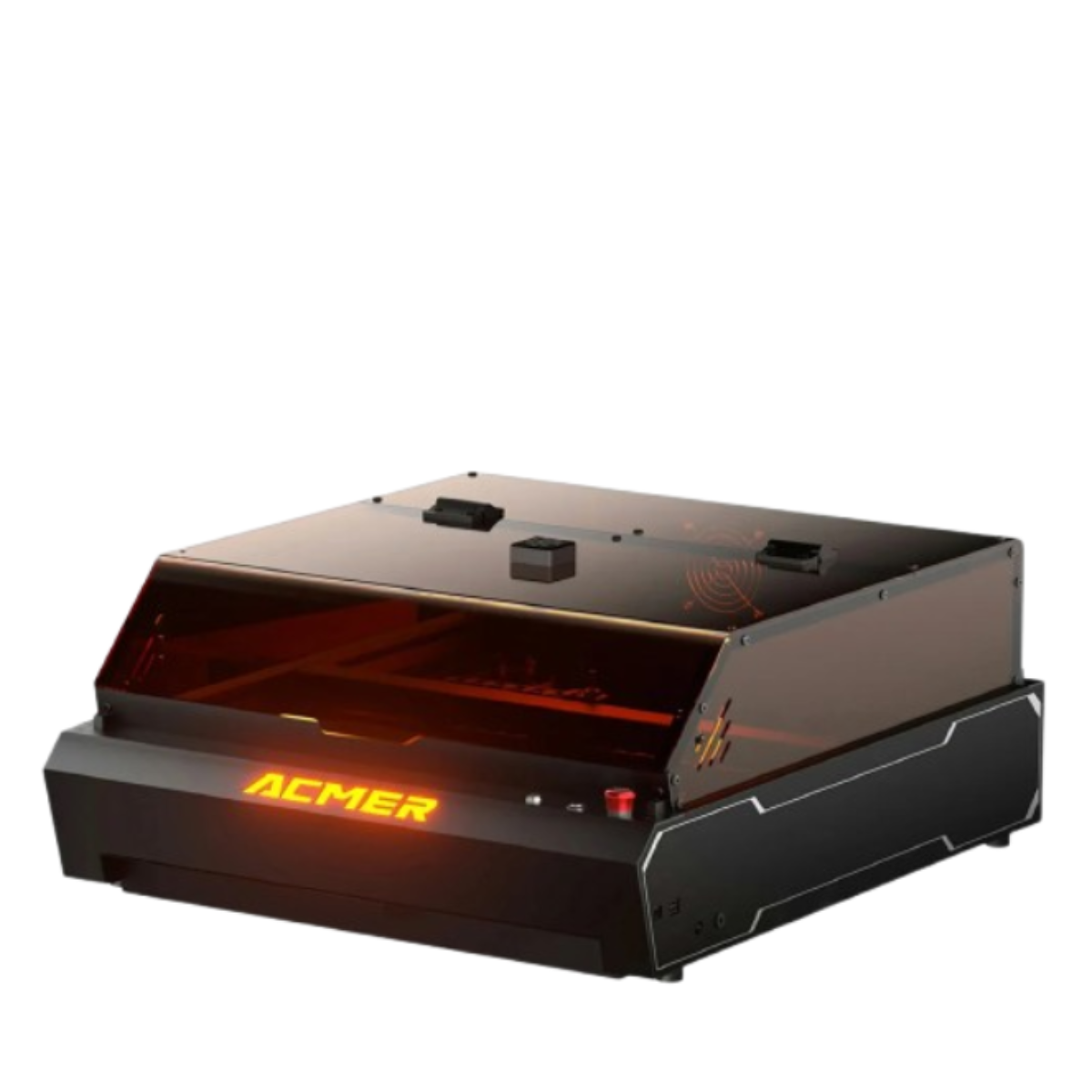
Best 2-in-1 laser engraver
The Acmer P3 offers both IR and diode engraving in a single unit - at the flip of switch you can change between the two, and for the price, it's one of the best around.
See more
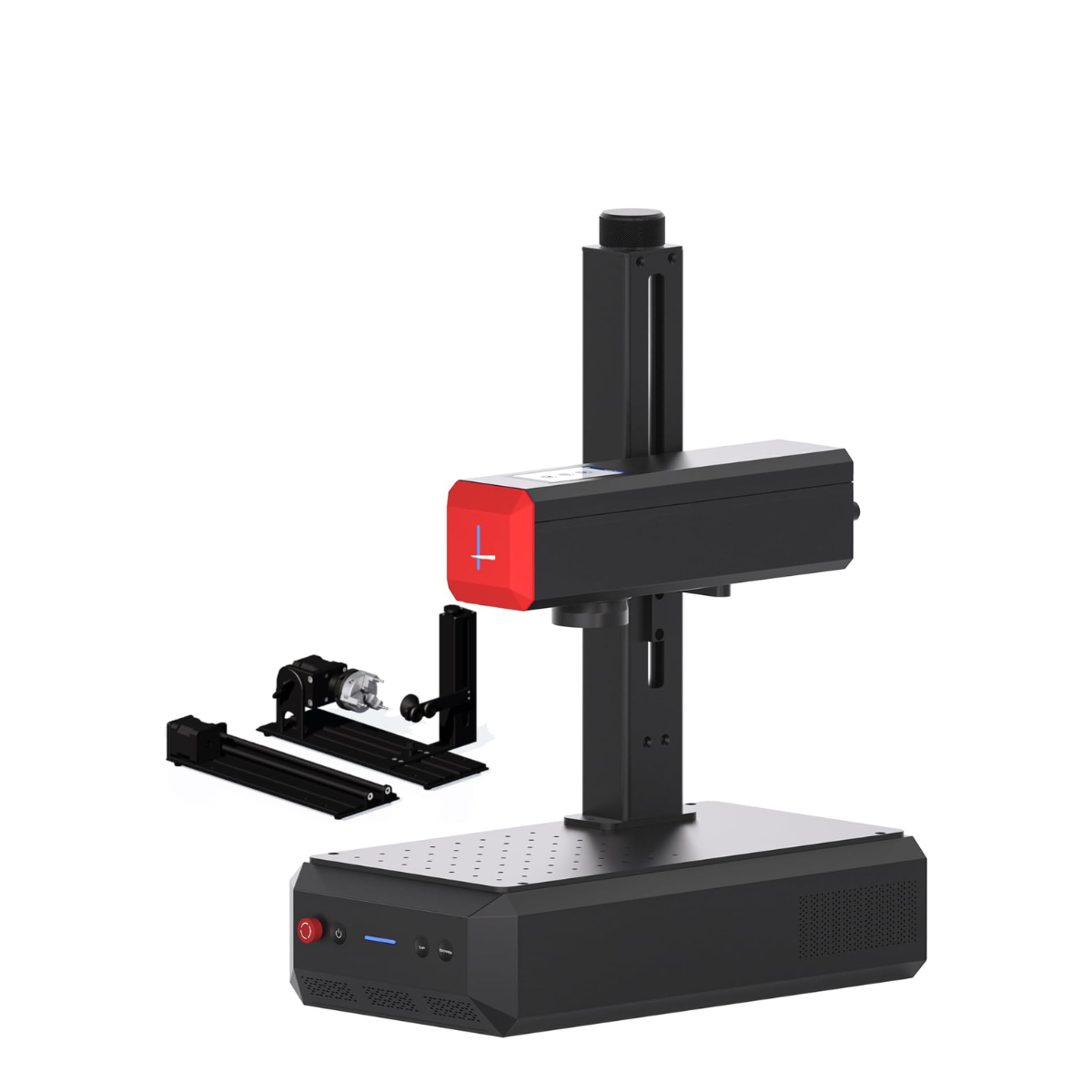
Best laser engraver for high-volume production
Ultra-fast, powerful, and packed with features like auto-focus and smart screen control, the ComMarker B6 MOPA fiber laser engraver delivers exceptional and precise results.
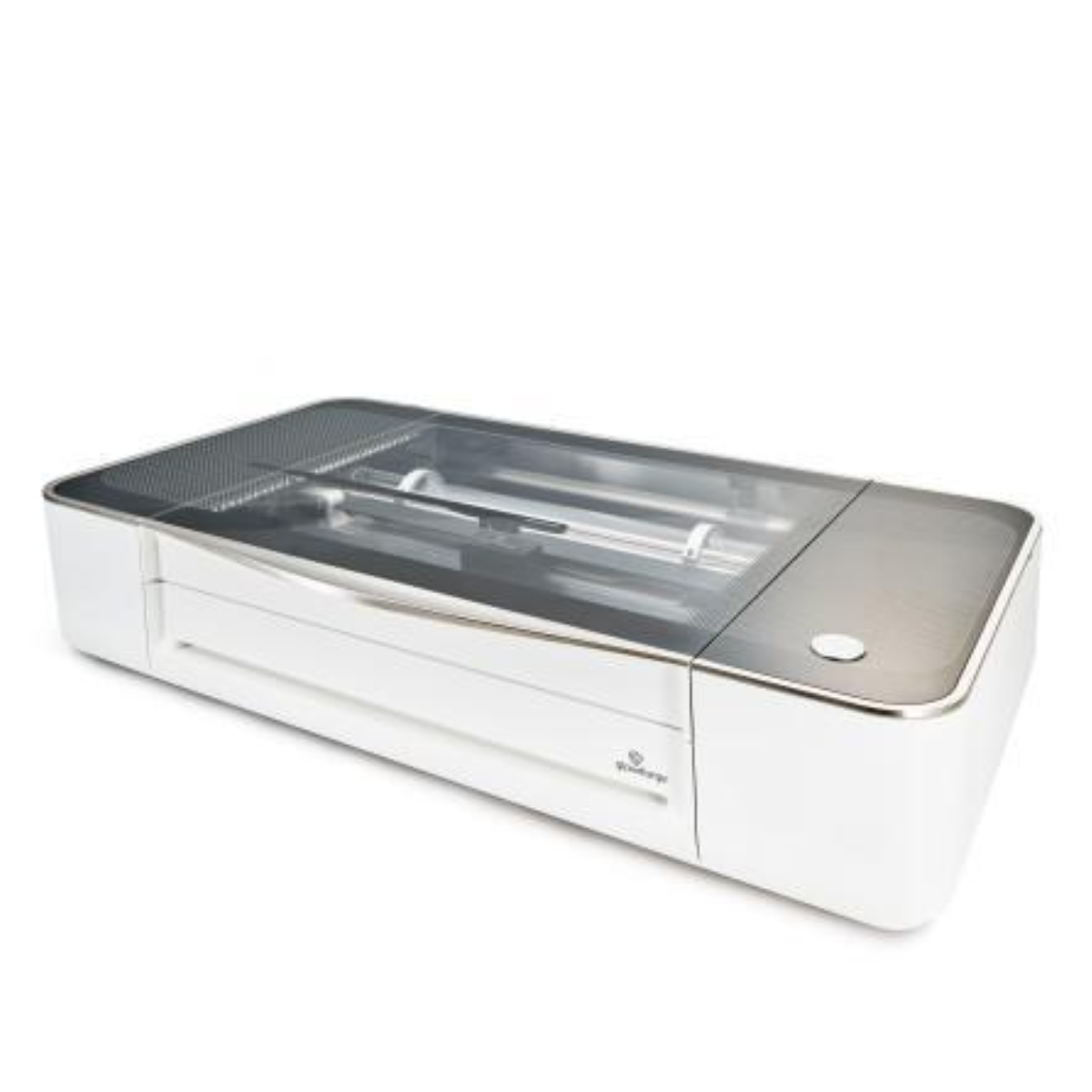
Best laser engraver for schools
A maker favourite and for a good reason, the Glowforge is just about as refined as you get and a great solution, particularly in an educational environment.
Best laser engraver overall
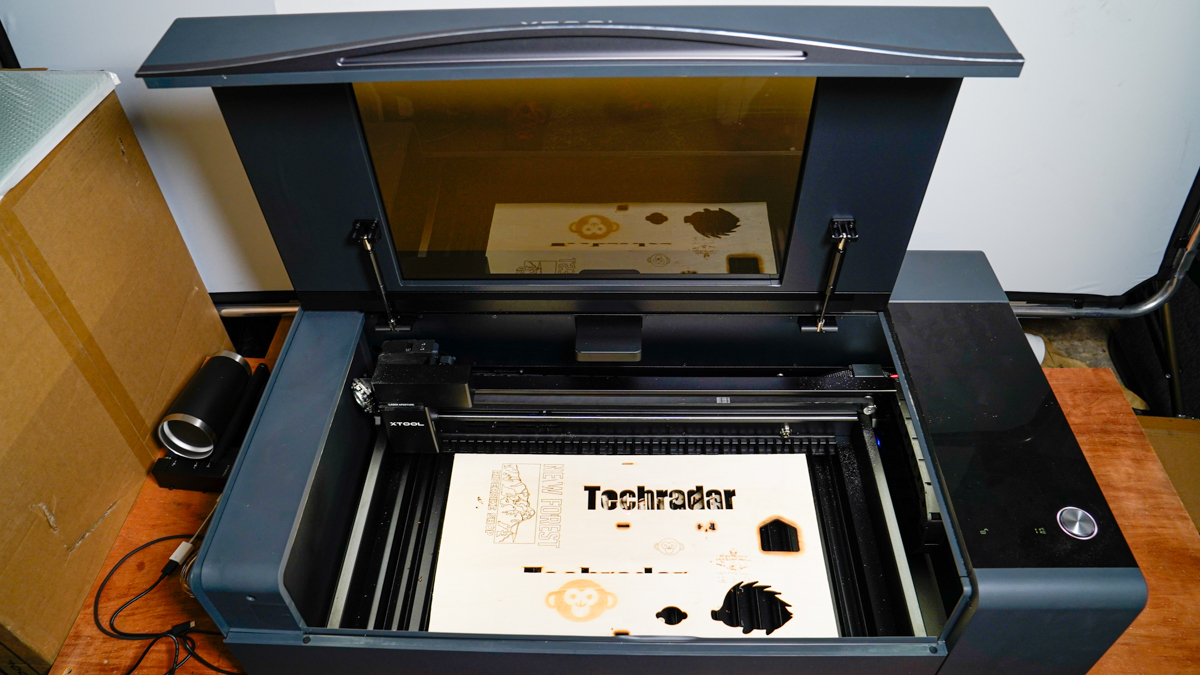
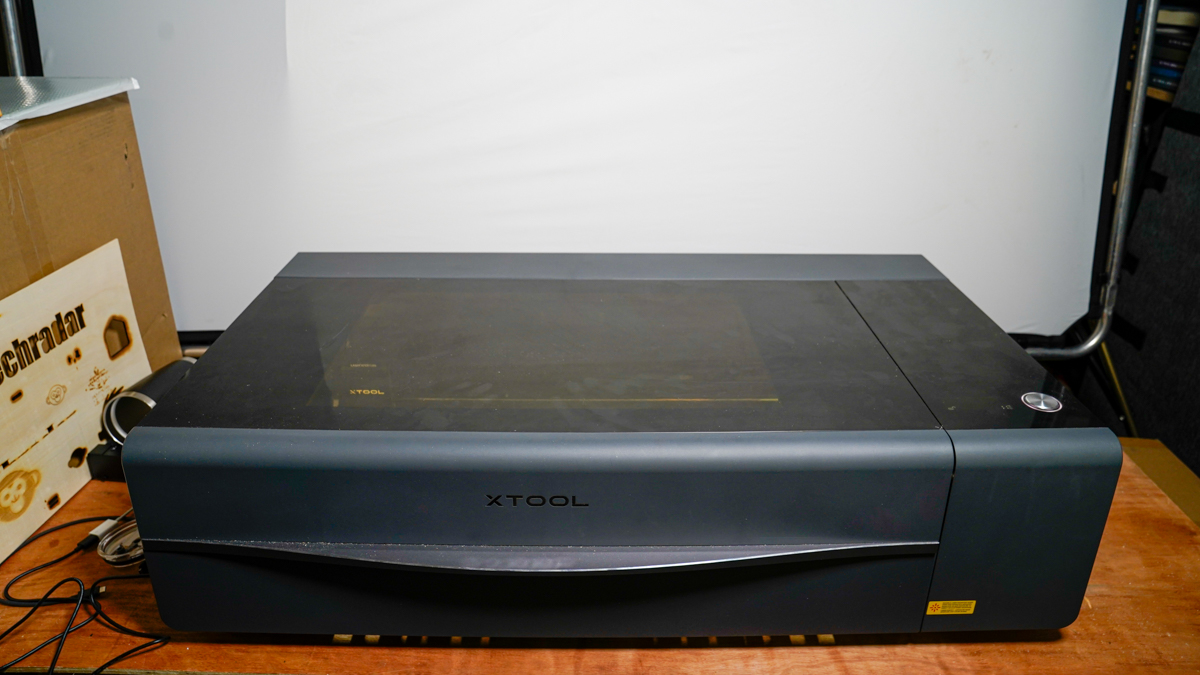

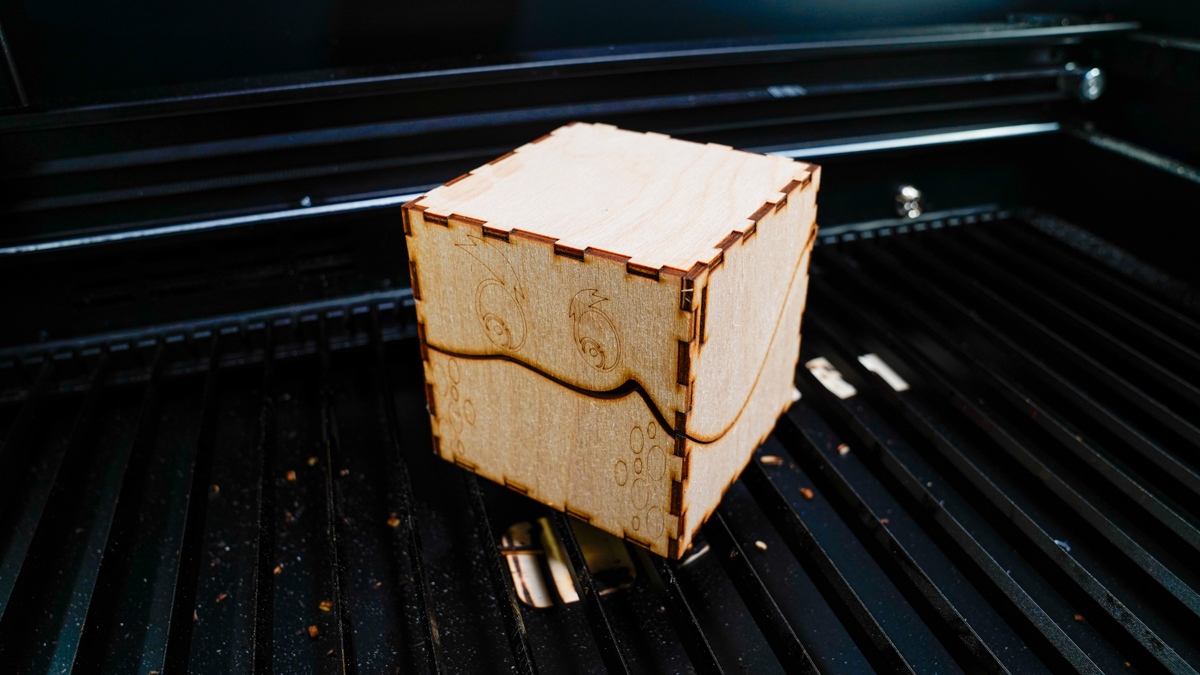

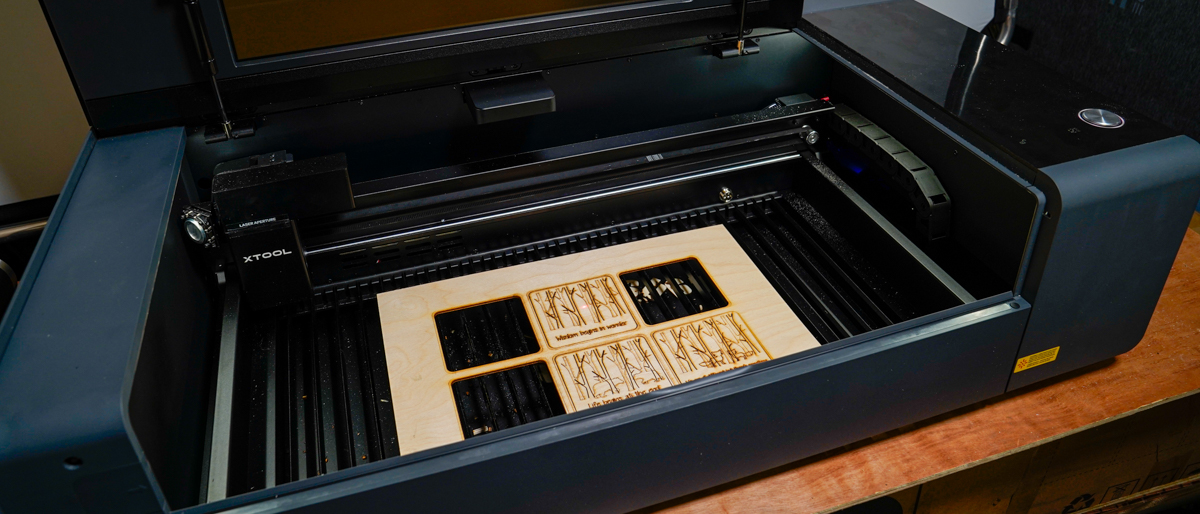

Specifications
Reasons to buy
Reasons to avoid
The xTool P2 laser engraver holds the crown as our best laser engraver, and for good reason. Uniquely positioned as one of the few fully enclosed engravers at its size and price point, this machine is not just a progressive evolution from open-framed alternatives; it's a quantum leap, designed to serve both serious enthusiasts and small businesses.
What elevates the xTool P2 to a class of its own are numerous standout features. From a user-centric computer-based software interface to a wide range of supported materials and an expansive collection of accessories, this machine has you covered for nearly any engraving or cutting project. The performance is unparalleled, delivering some of the cleanest cuts I've ever seen. Plus, it boasts invaluable add-ons like the RA2 Pro and a riser for handling larger objects.
However, it's not without imperfections. The machine's sizable dimensions and hefty weight demand teamwork for mobility, two people are needed just to shift it. Moreover, while the software is competent, it could benefit from the addition of bed image tracing, a feature offered by some competitors.
Yet, these are minor gripes in the grand scheme. The P2 offers an unmatched performance-to-price ratio. The robust build quality assures that this is more than a purchase; it's a long-term investment. If you're in the market for a versatile, durable, and high-performing laser engraver, the xTool P2 is an exceptional choice.
Read our full xTool P2 review
Best laser engraver on a budget
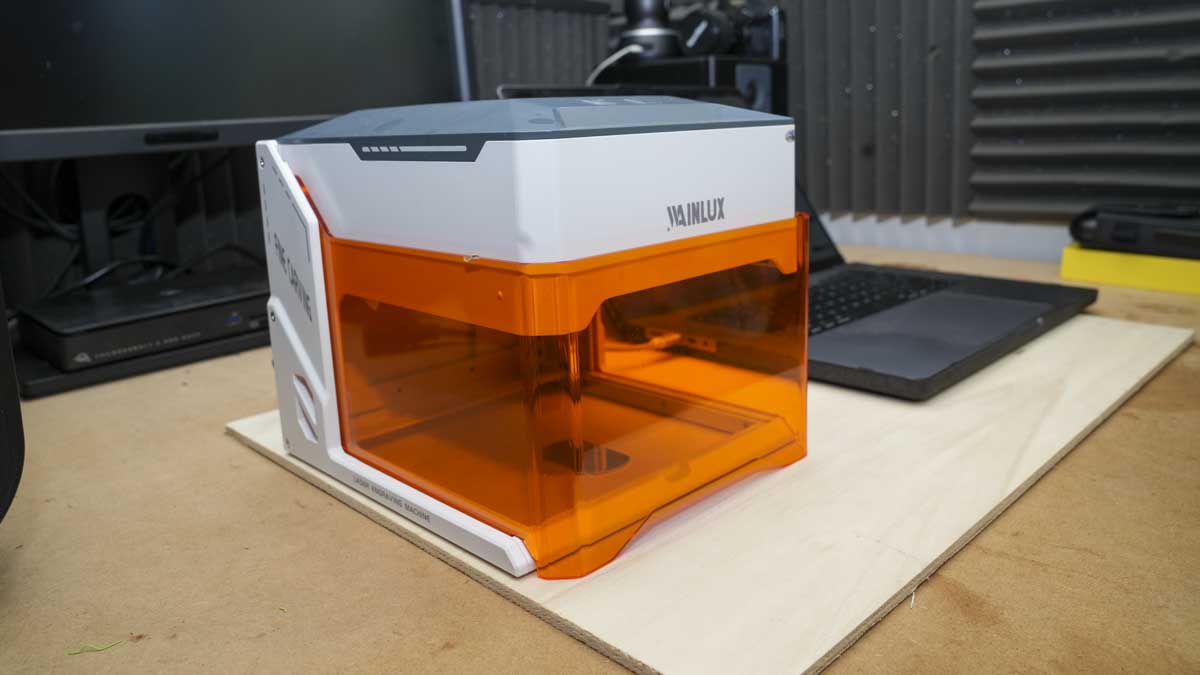
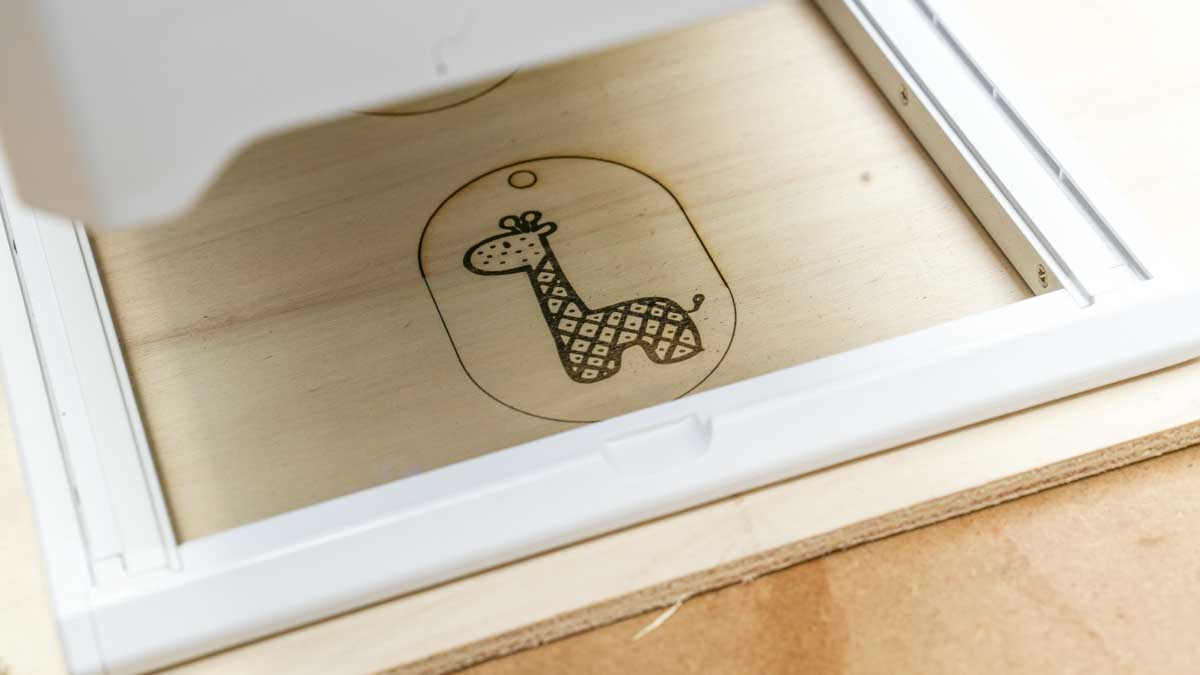

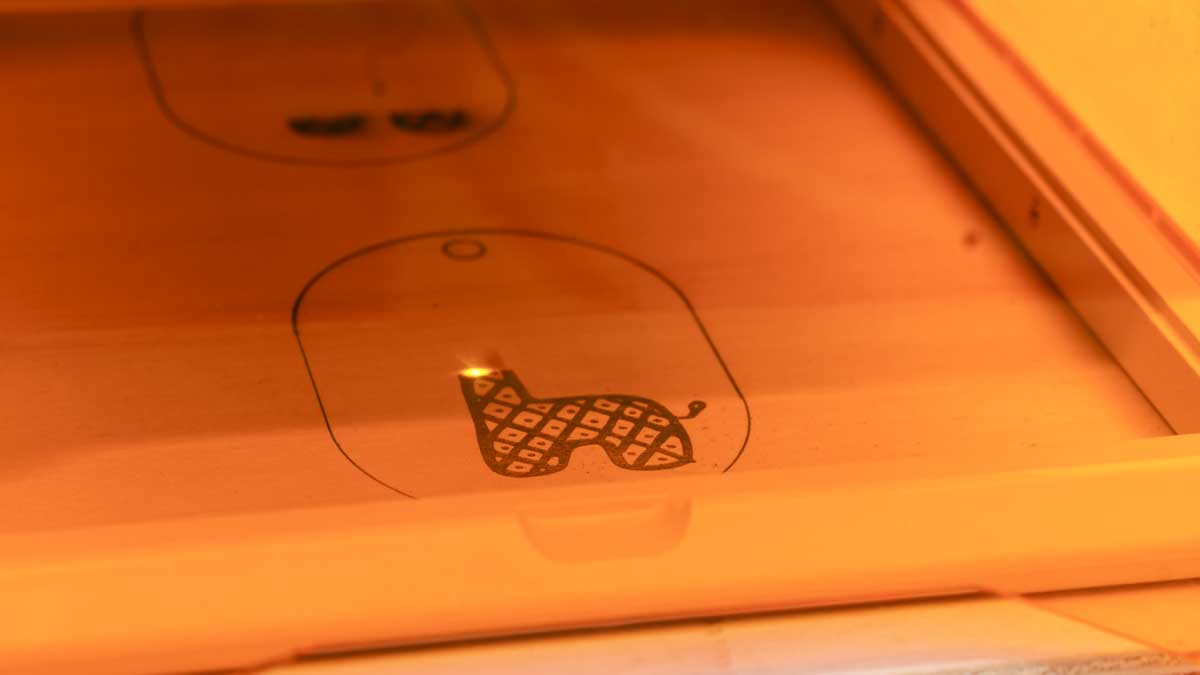
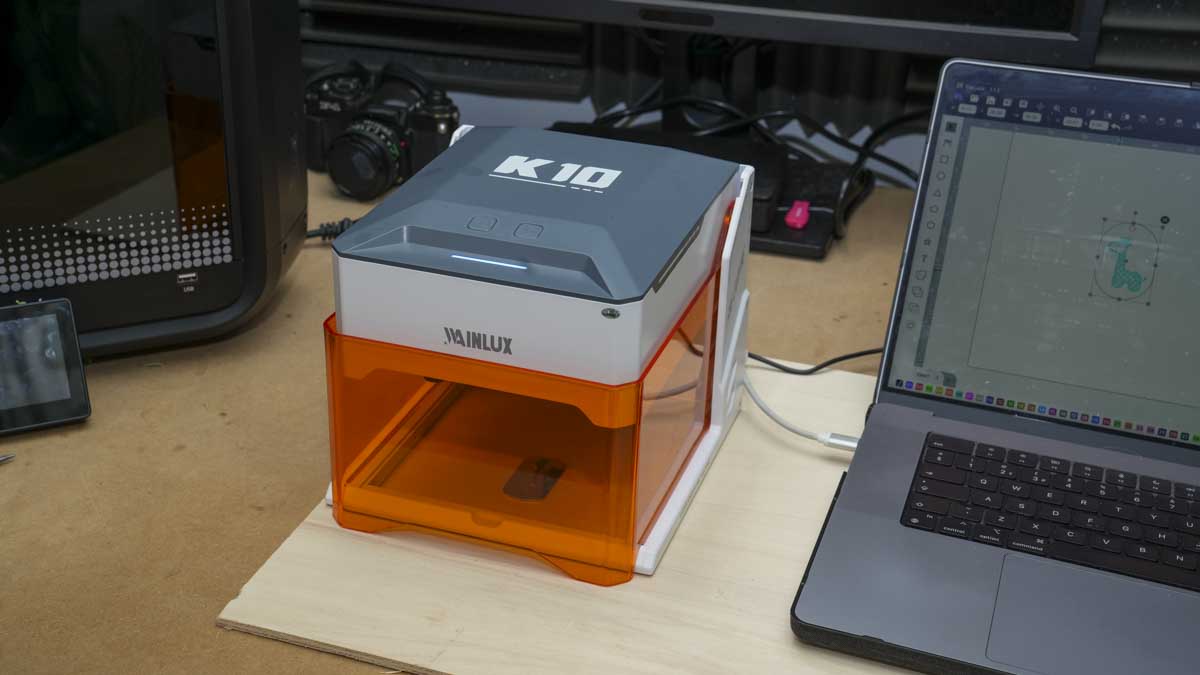
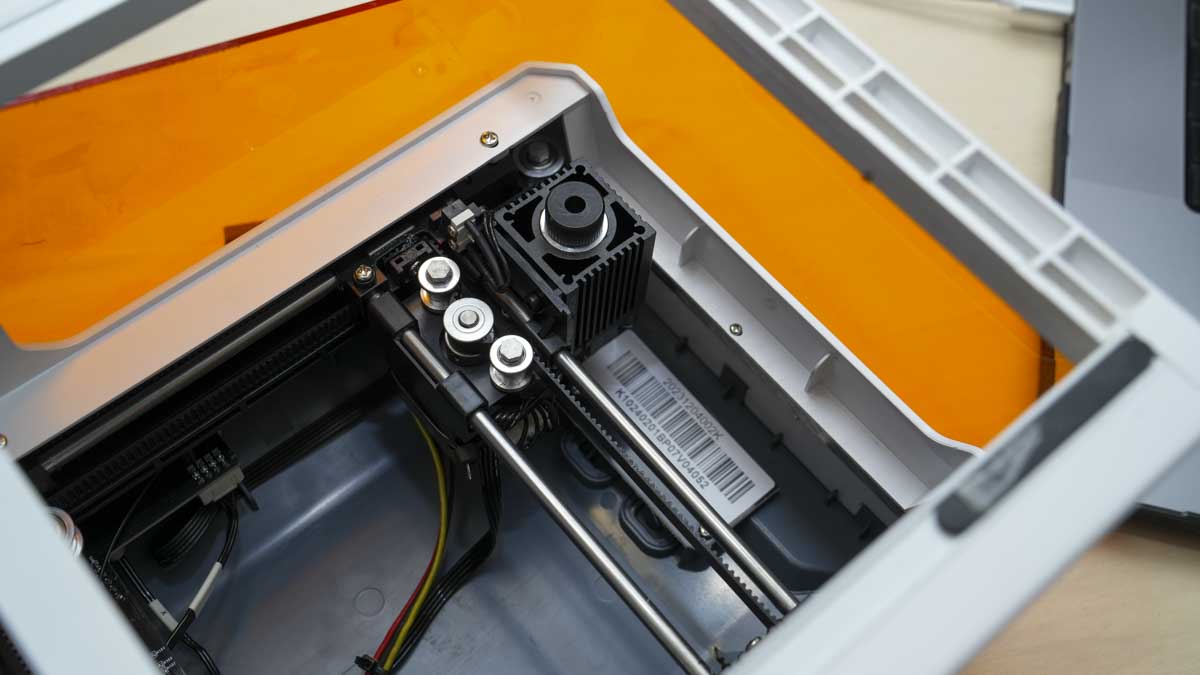
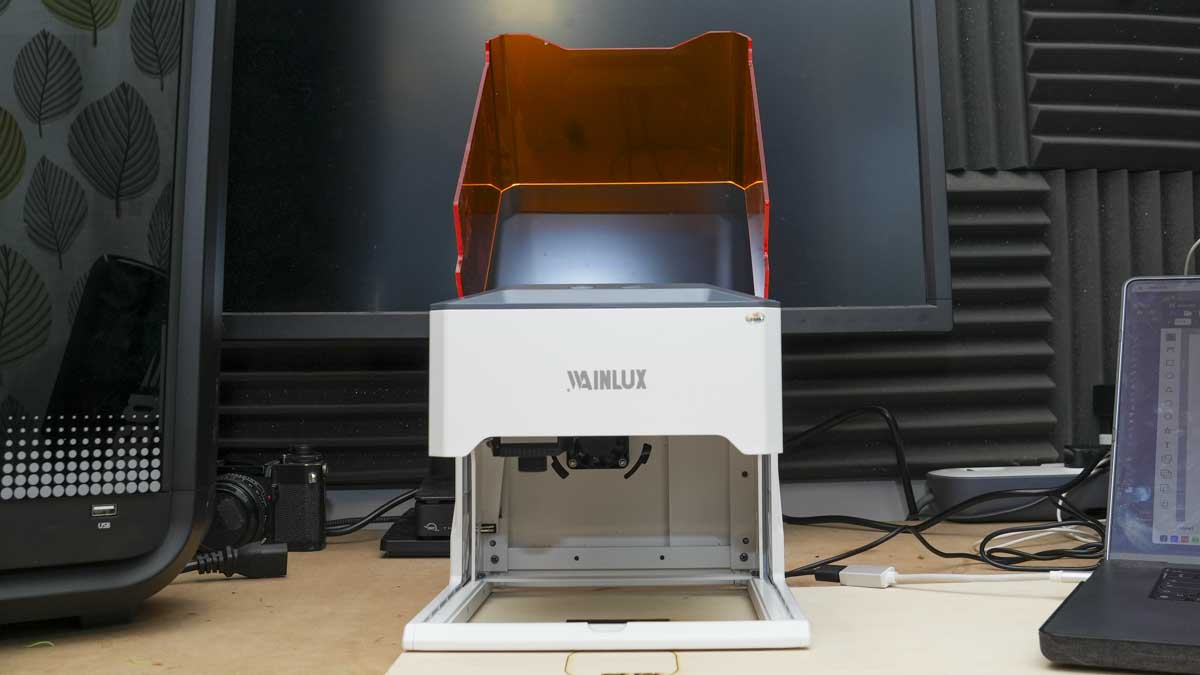
Specifications
Reasons to buy
Reasons to avoid
The Wainlux K10 is a small, low-powered laser engraver with a low price - a natural pick for those on a budget or anyone looking to try out engraving for the first time.
Set-up was quick when I tested this machine, and the fully enclosed system makes the whole process even easier. It really is a case of plugging in the engraver, checking the focus, and you're go to go.
At 3W, it's not a powerful laser engraver, but I found results were very good even on metal and painted surfaces - although this takes time. When we used JPG images to measure resolution, the K10 again showed impressive results, and we were delighted with the detail here.
There are a few flaws, I thought. For one thing, it must be connected to a USB-A or USB-C port (Thunderbolt 4 and USB 4 won't work). And I noticed when engraving some curves, such as a circle, the sides don't perfectly align. It's only a minute and can be easily cleaned up, but it does occur. It's also far too compact and even with the 5w power upgrade, it won't meet high-volume needs. But for individuals, hobbyists, and small businesses, this is a great budget laser engraver.
Read our full Wainlux K10 review
Best laser engraver for beginners



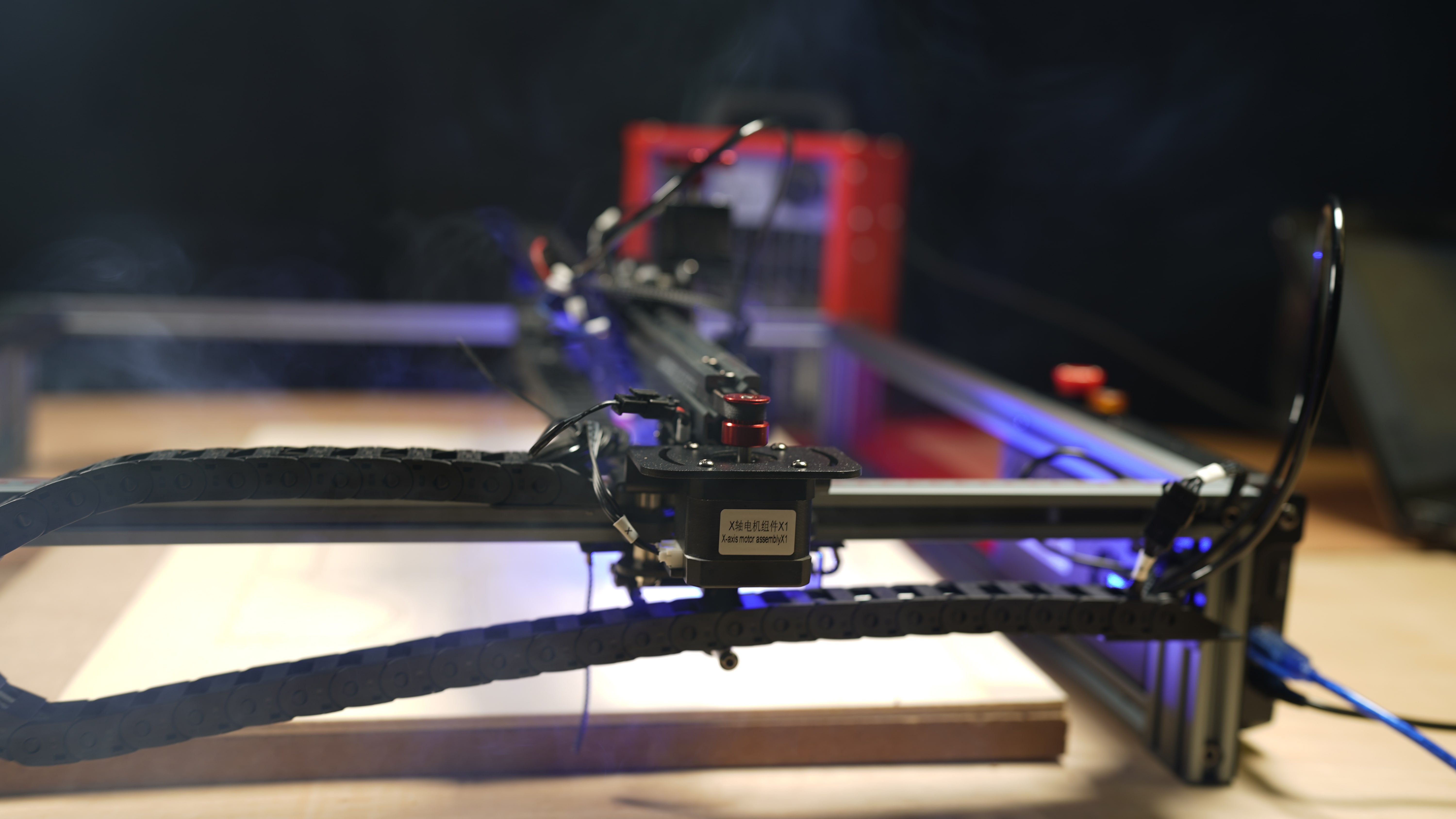
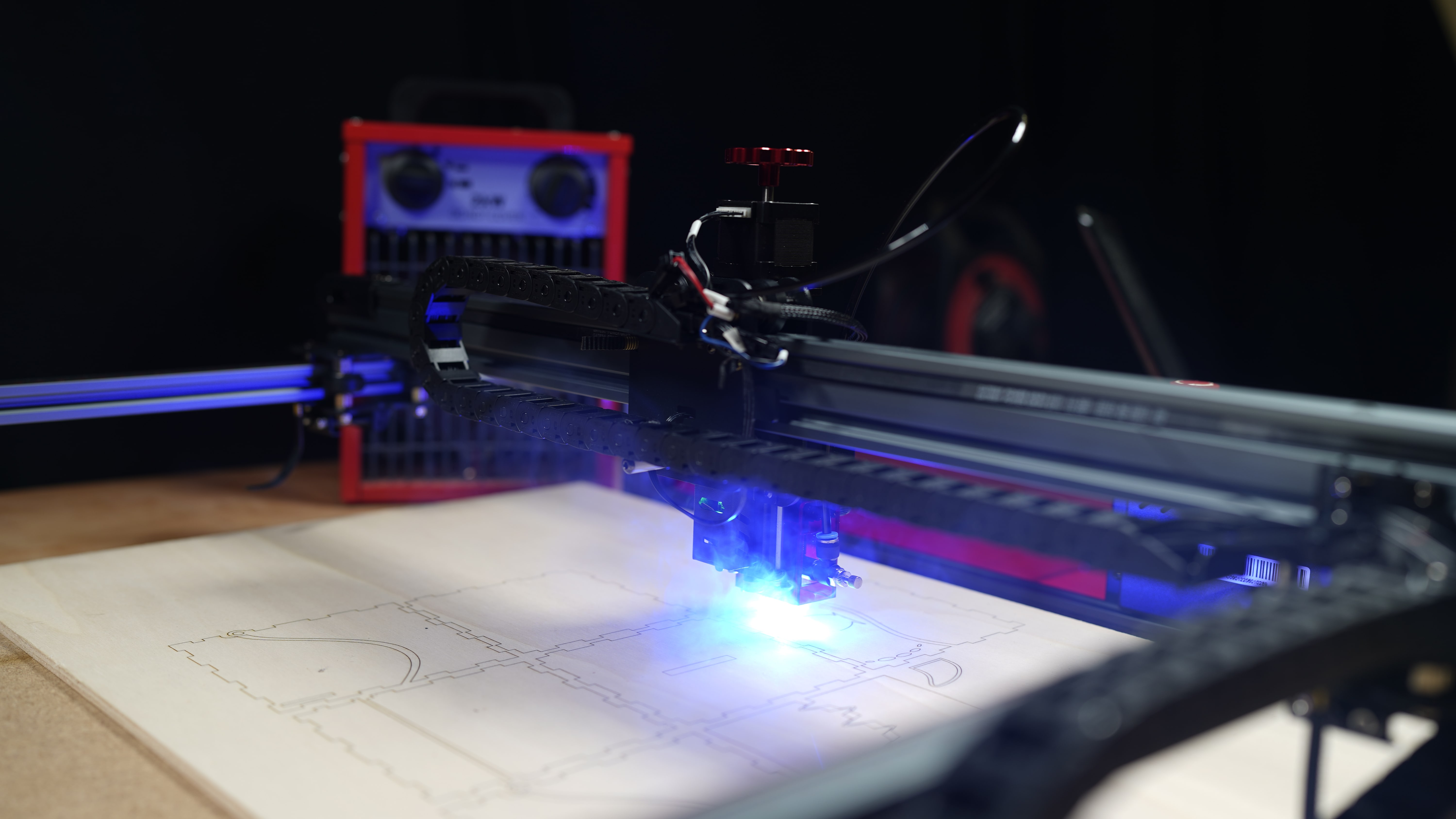

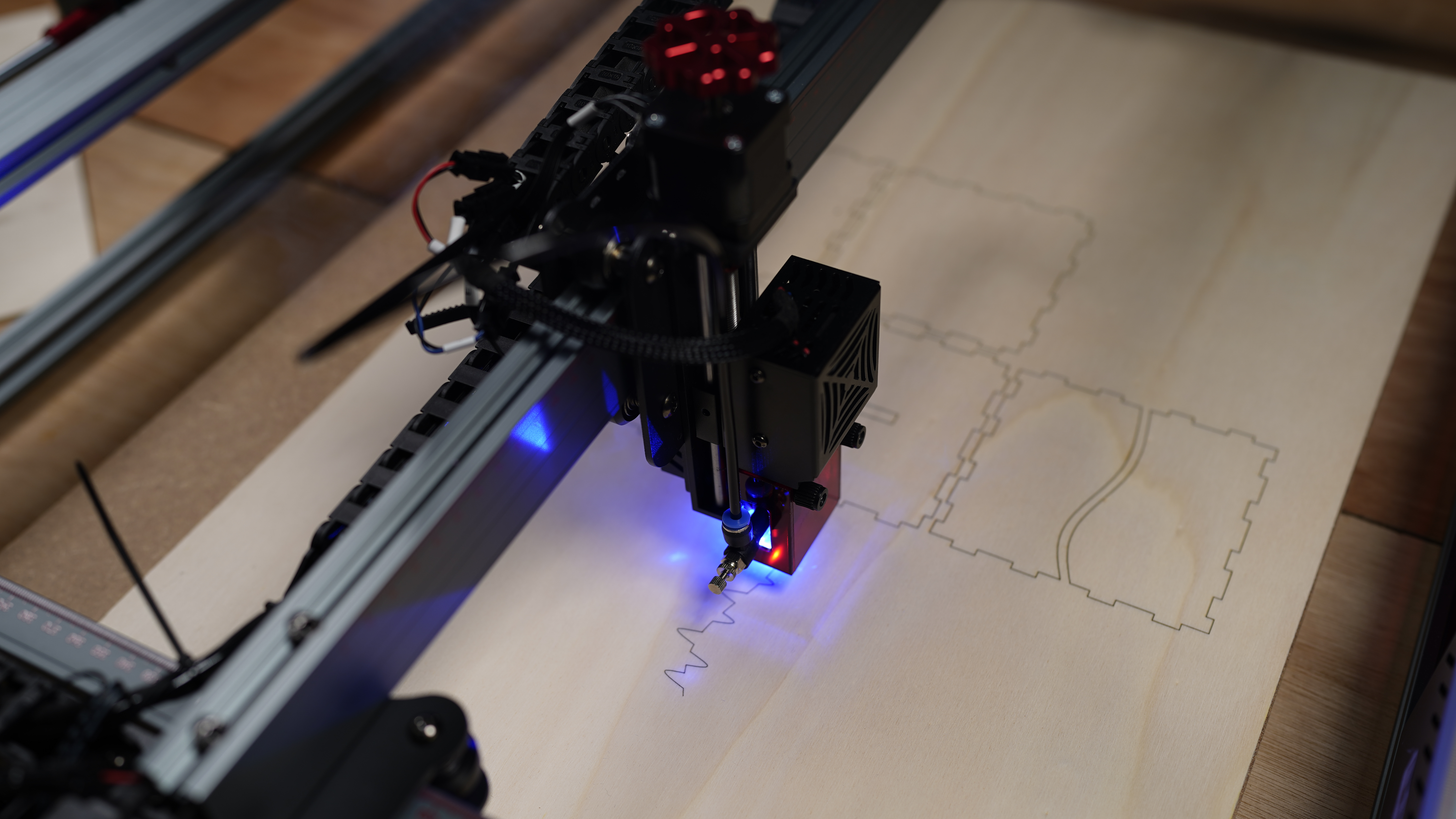
Specifications
Reasons to buy
Reasons to avoid
The Two Trees TS2 Laser Engraver is a standout choice for hobbyists and small businesses alike, offering unmatched quality and performance that justifies its slightly higher price tag. However, it's not without its quirks. The initial setup can test your patience with fiddly screws and belts, especially in confined spaces—so perhaps consider moving the assembly to a spacious workshop.
Once built, you're rewarded with a robust and aesthetically pleasing machine, complete with anodised parts. Setting it up is generally straightforward, although those on iOS might find the Wi-Fi connectivity somewhat finicky. That said, the manual, while comprehensive, could be clearer on some of the nitty-gritty details. Performance-wise, the TS2 excels in both engraving and cutting tasks, offering excellent quality that sets it apart as a prime choice for serious enthusiasts.
Beyond its core capabilities, the machine is also expandable, allowing for additional attachments like an air pump for fume extraction. Still, it's worth noting that it lacks an enclosure, so make sure you have plenty of space and a well-ventilated area. The Wi-Fi connection can be troublesome on iOS devices, although it works beautifully on Android. Overall, if you're willing to overlook these minor drawbacks, the Two Trees TS2 offers professional-level laser engraving at a reasonable price and is one of the best laser engravers on the market.
Read our full Two Trees TS2 laser engraver review
Best laser engraver for custom crafts
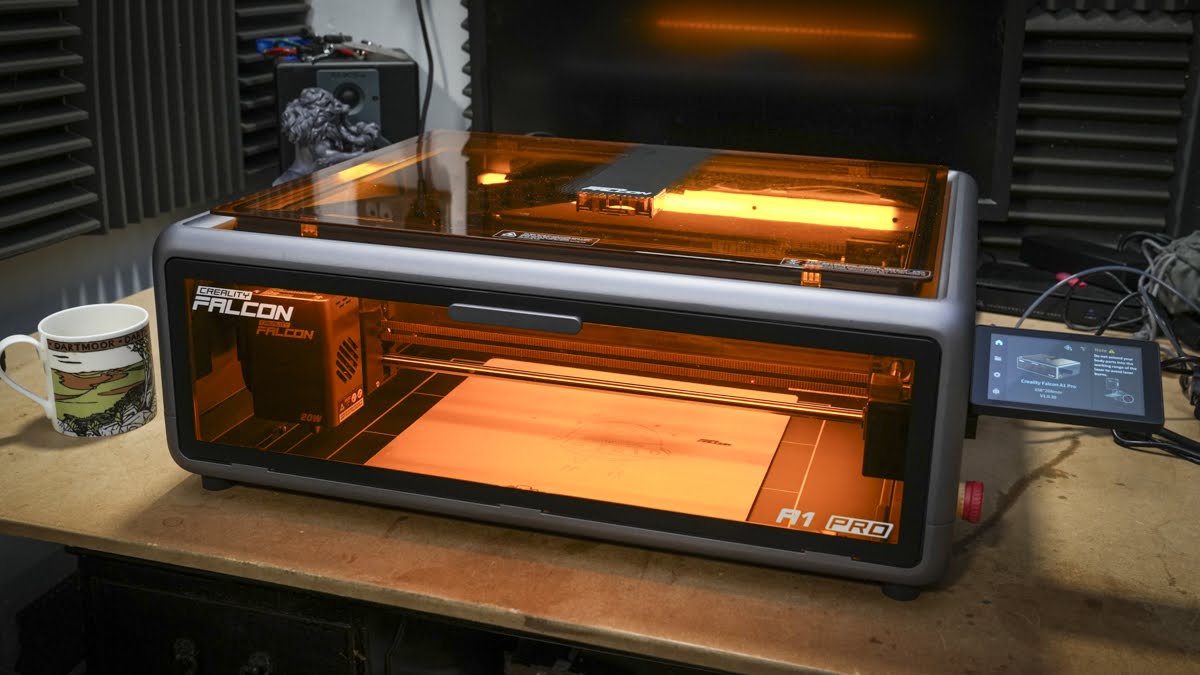
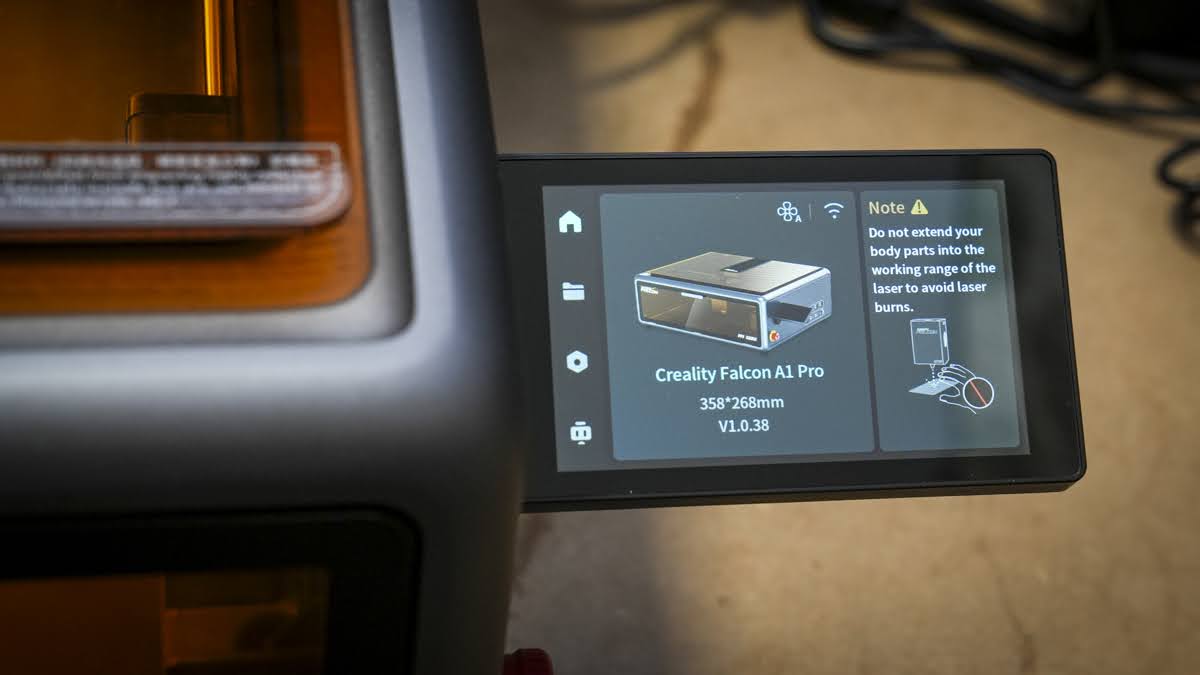


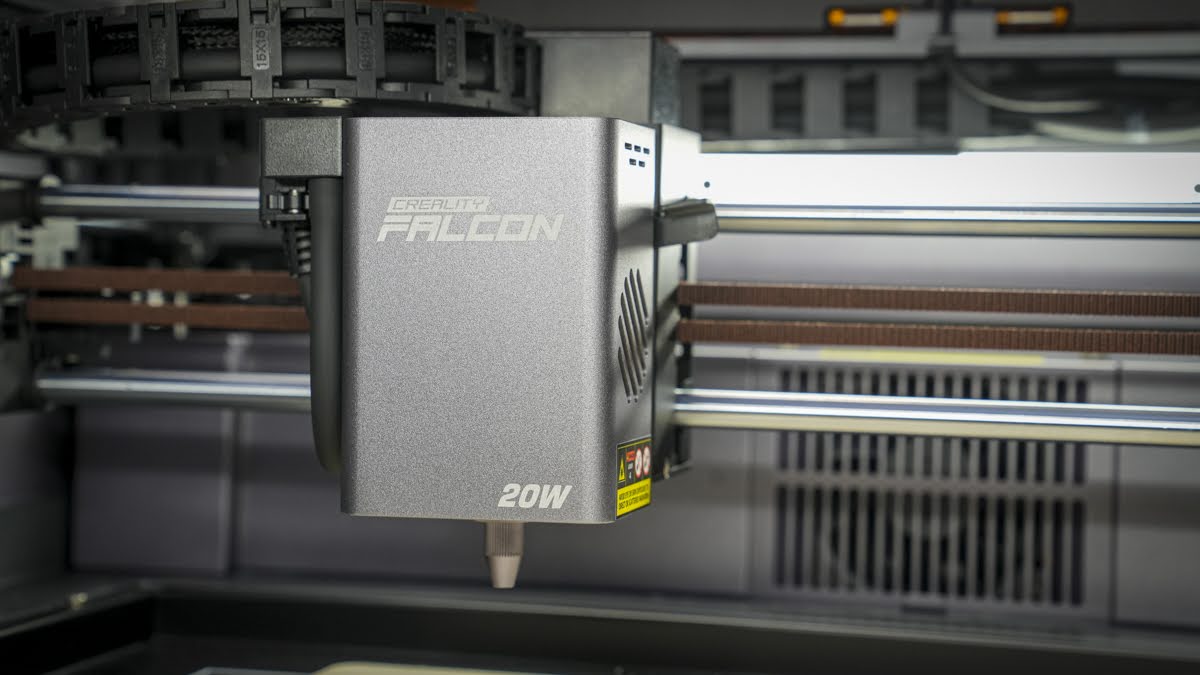
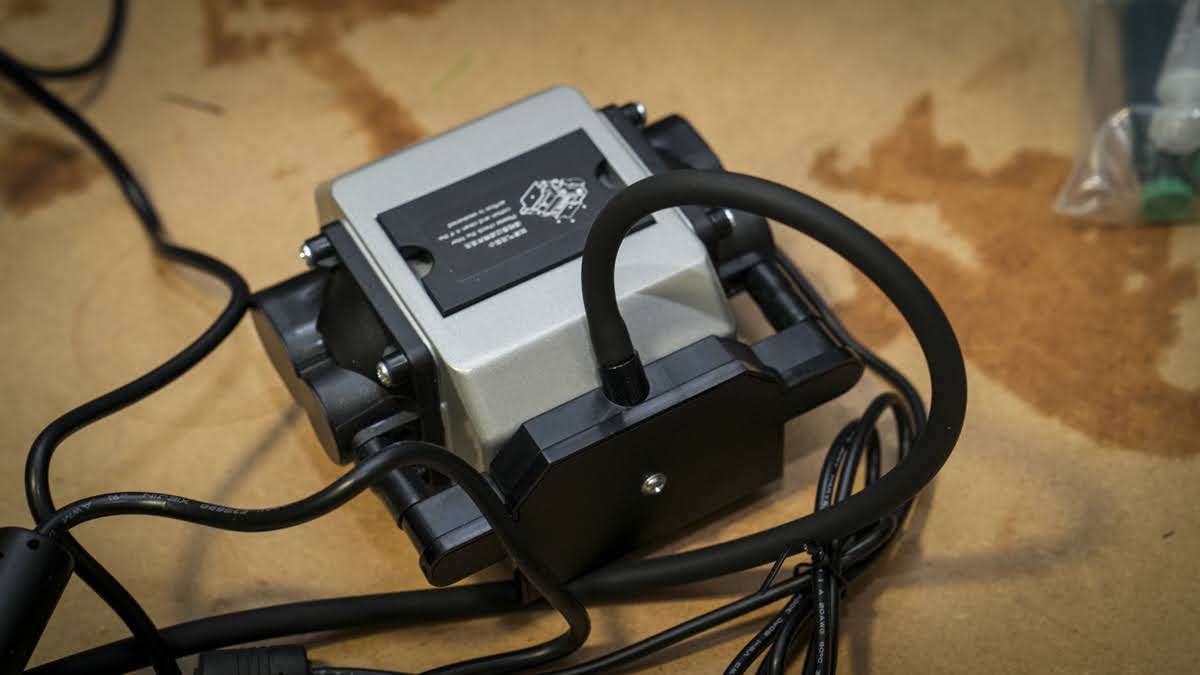
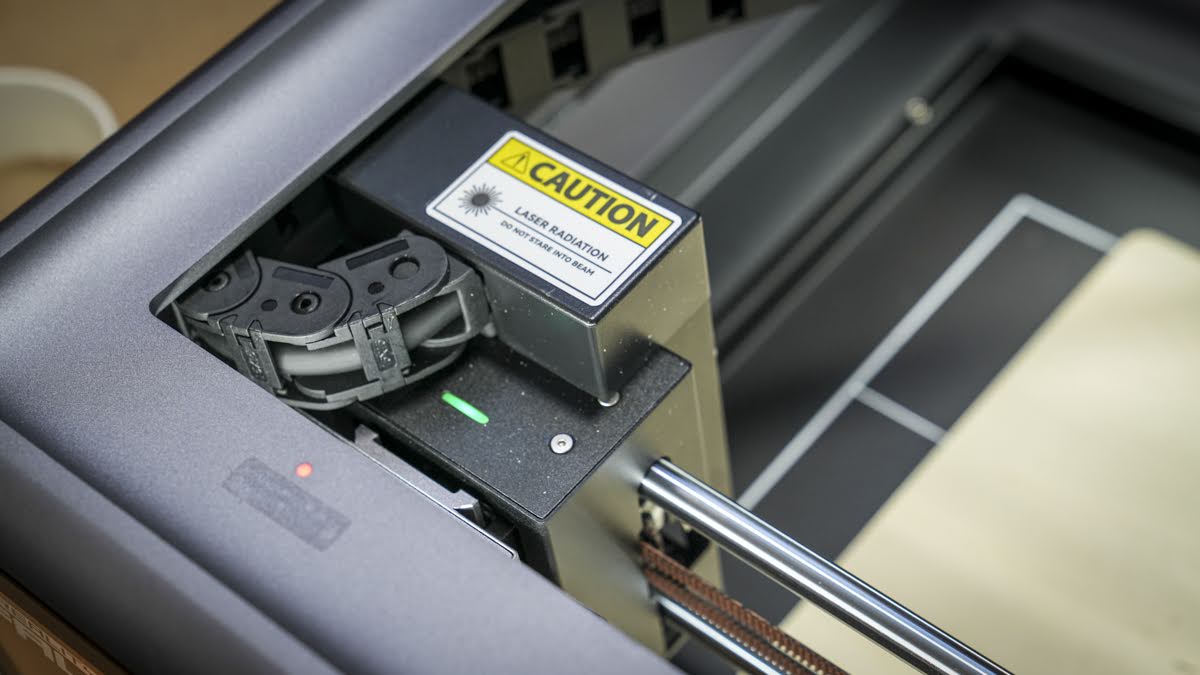
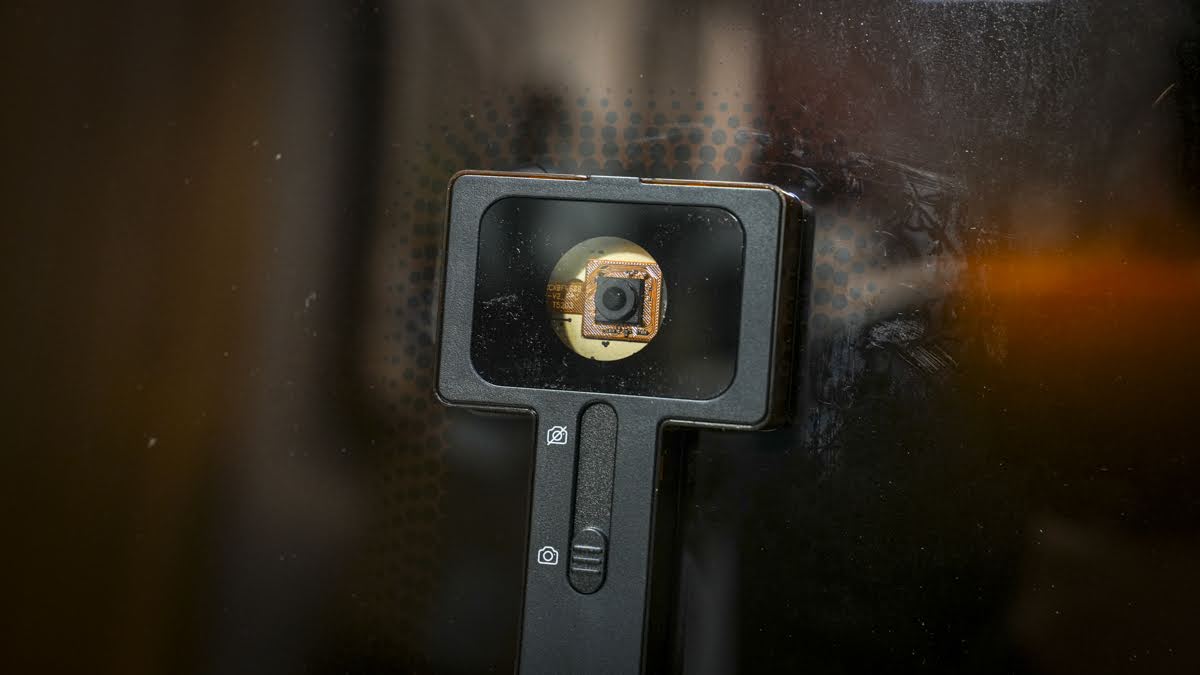
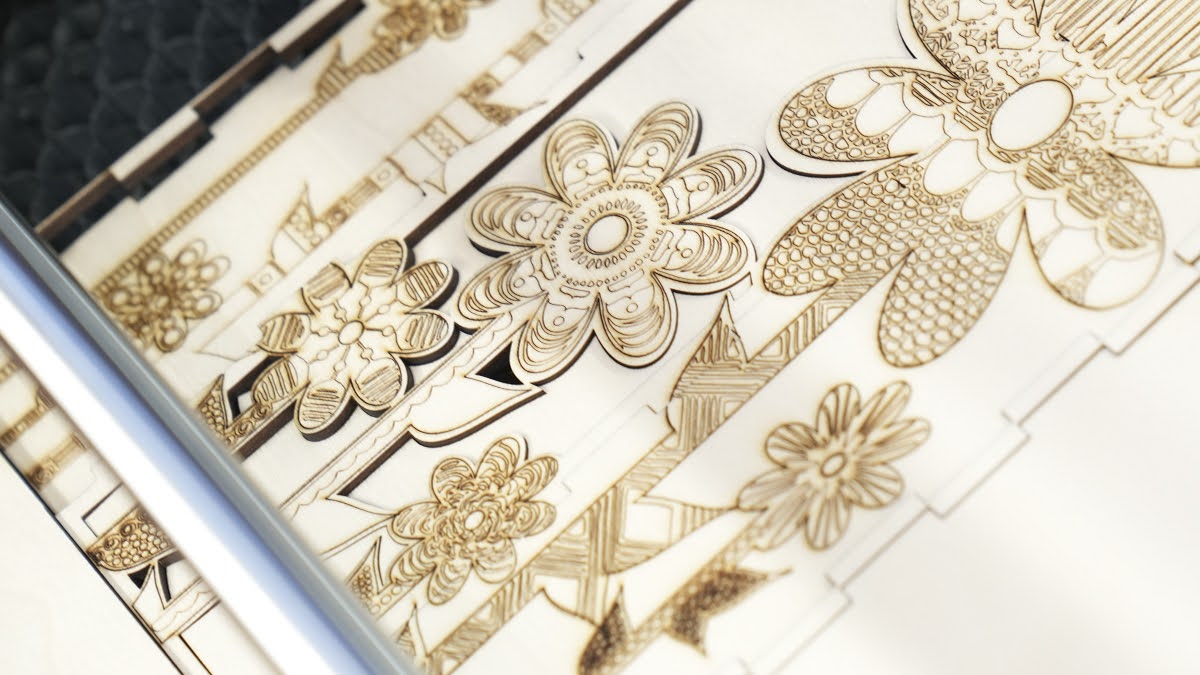
Specifications
Reasons to buy
Reasons to avoid
The Creality Falcon A1 Pro is a compact 20W desktop laser engraver that left us impressed. The size alone makes it perfect for use in small spaces and workshops.
It's a fully enclosed unit with air assist for keeping the area clear of debris. And after toying with the settings, I found I could achieve some of the finest, most detailed engravings you can get at this level. It worked well across wood, leather, acrylic and glass (although there's not enough power here for metal engraving). In terms of accuracy and cutting, we were left highly impressed - especially given the small size of the unit. If I have one complaint, it's that the screen doesn't fold away, and it did get in the way at times.
Yes, it's not as fast or precise as a machine like the ComMarker B4, which is ideal for larger production volumes. And without height adjustment, you're limited in terms of materials. However, if you're a very small business or enthusiast who's cutting and engraving flat materials or creating custom crafts for gifting or selling, the Falcon A1 Pro is ideal.
Read our full Creality Falcon A1 Pro laser engraver review
Best laser engraver for small businesses
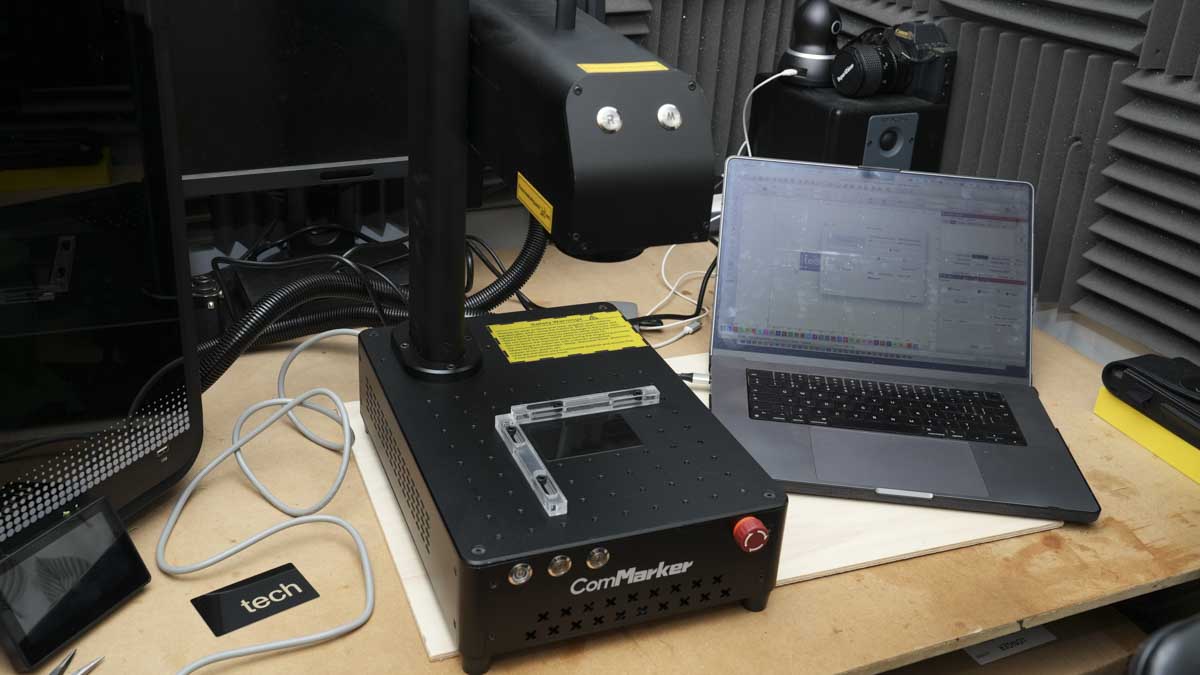


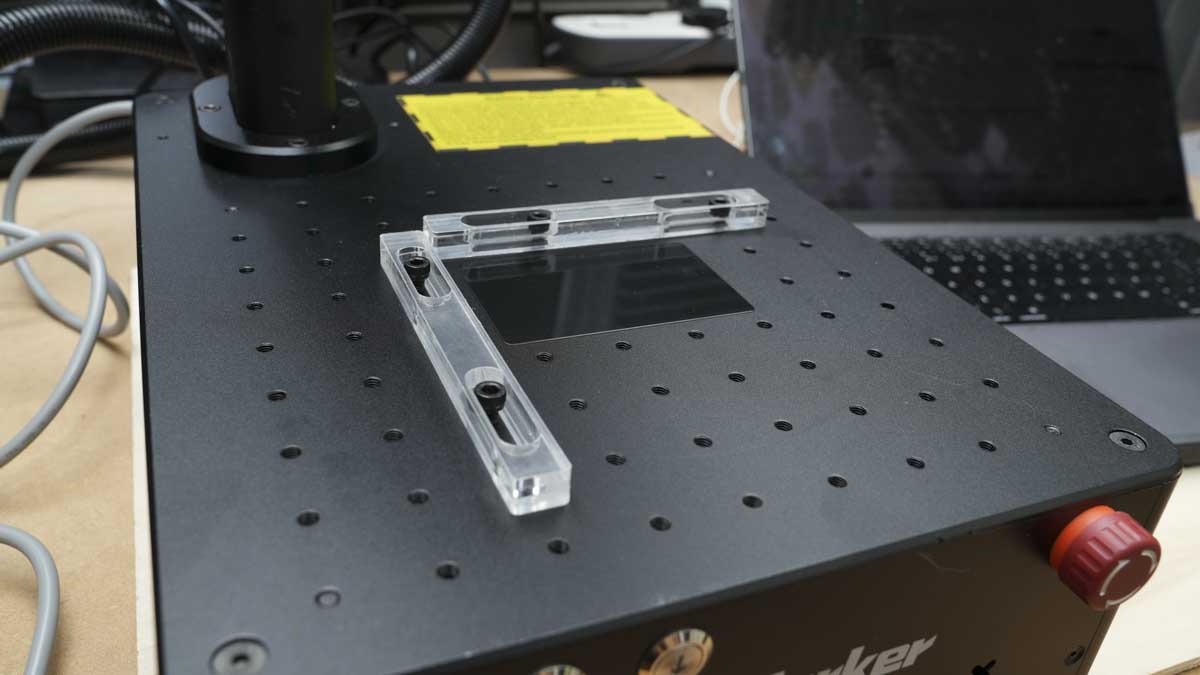

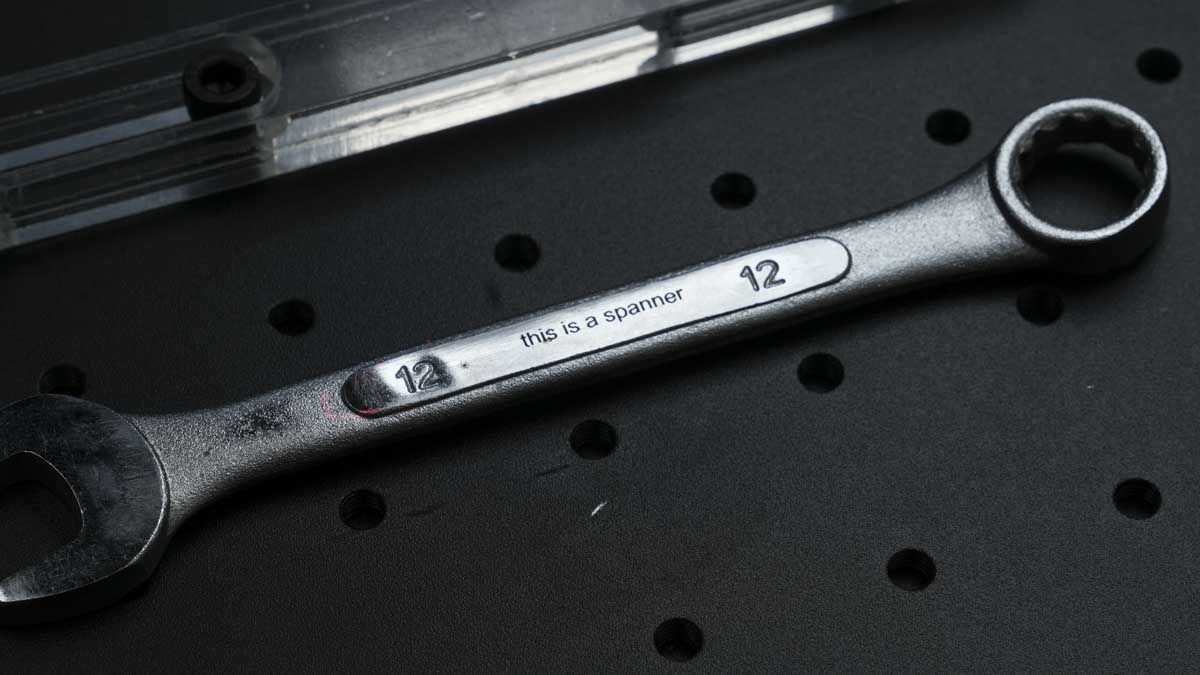

Specifications
Reasons to buy
Reasons to avoid
You'll find several business-grade laser engravers in this round-up, but I especially like the ComMarker B4 20W, which served up affordable, fast, and precise commercial engraving - particularly those working with metal, plastic, and leather.
This unit is a fibre laser engraver, which differs from the standard mechanical gantry X-Y laser machines. For one thing, it features a smaller work area, making it a good pick for engraving metal items like dogtags and phones, as well as hard plastic and leather. However, you'll need to prepare wood before you can start engraving. I also found it not as easy to set up as other models - although still not difficult, and once I was up and running, the process was simple.
Our review unit maxed out at 20W - and that won't be enough for high-volume engraving on thicker materials. Happily, the B4 is available up to 100W for those who need that additional power.
Read our full ComMarker B4 laser engraver review
Best 2-in-1 laser engraver
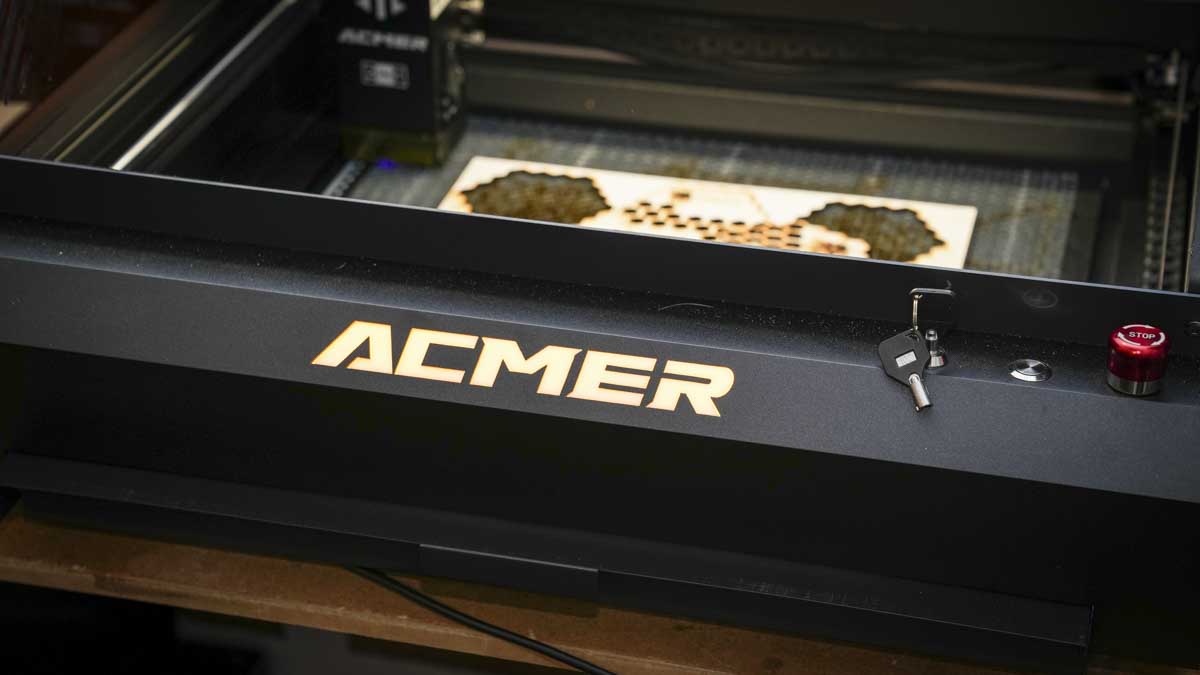
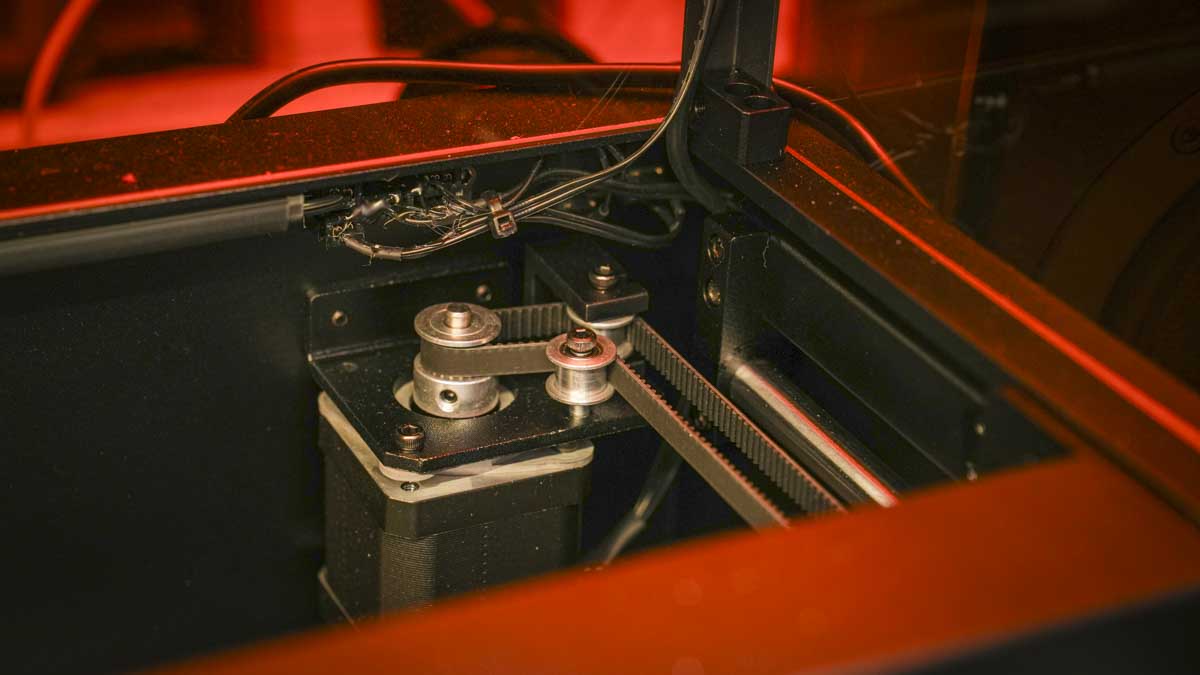
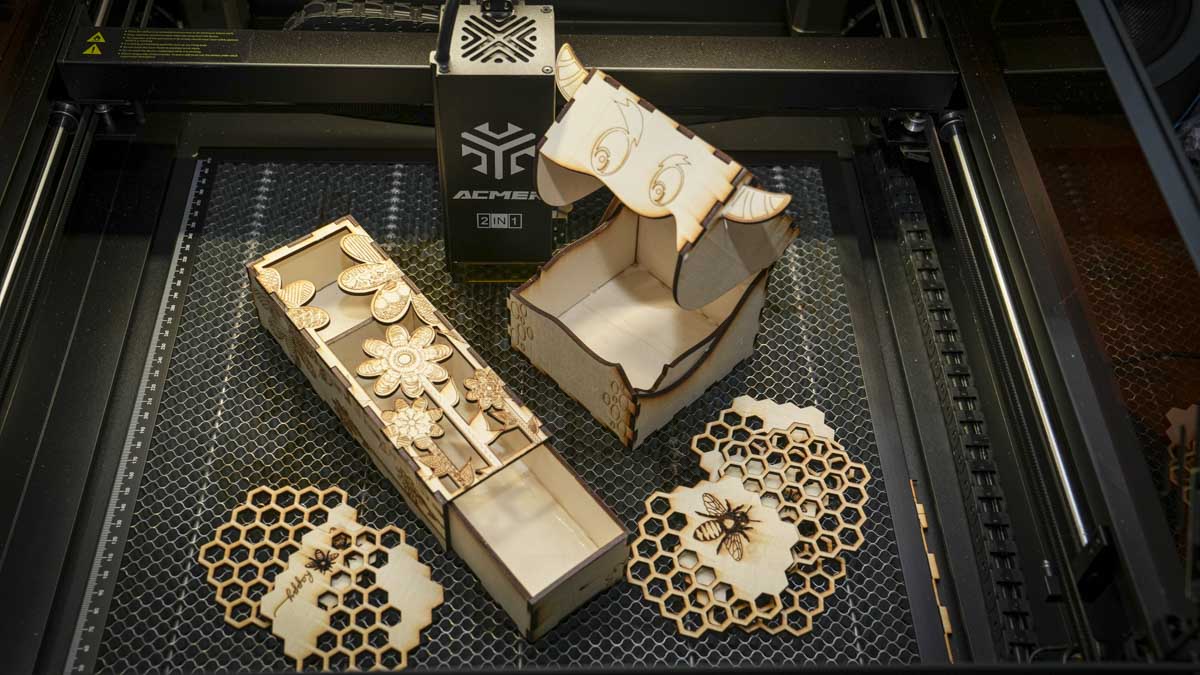
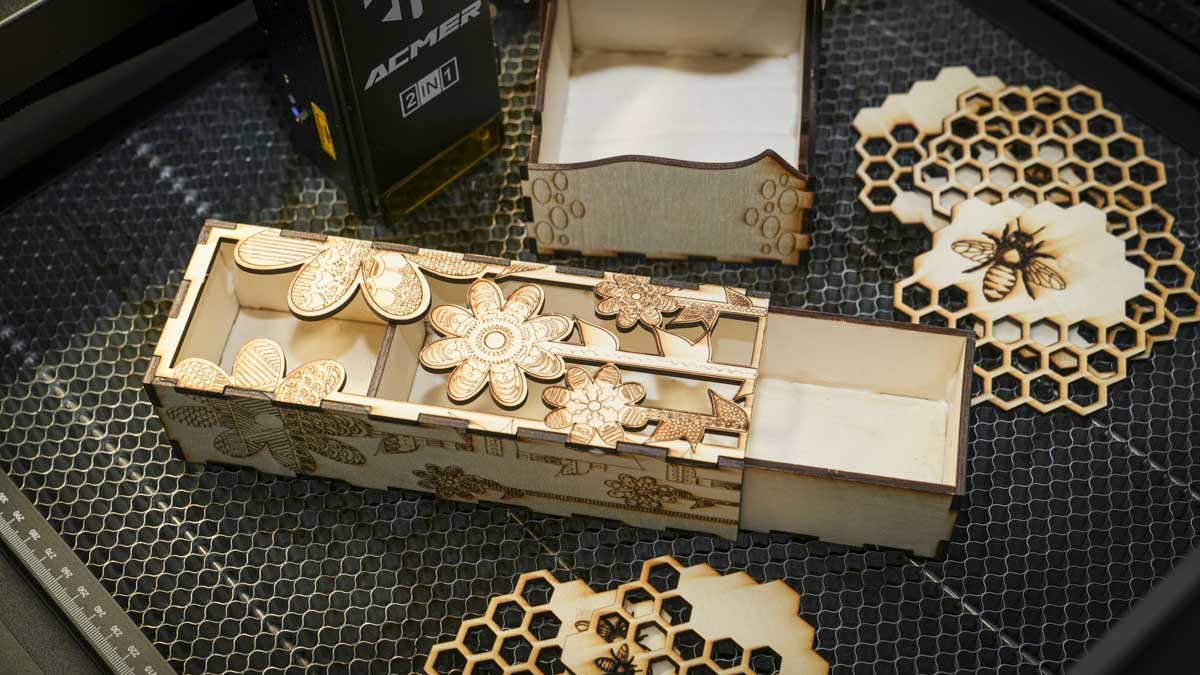
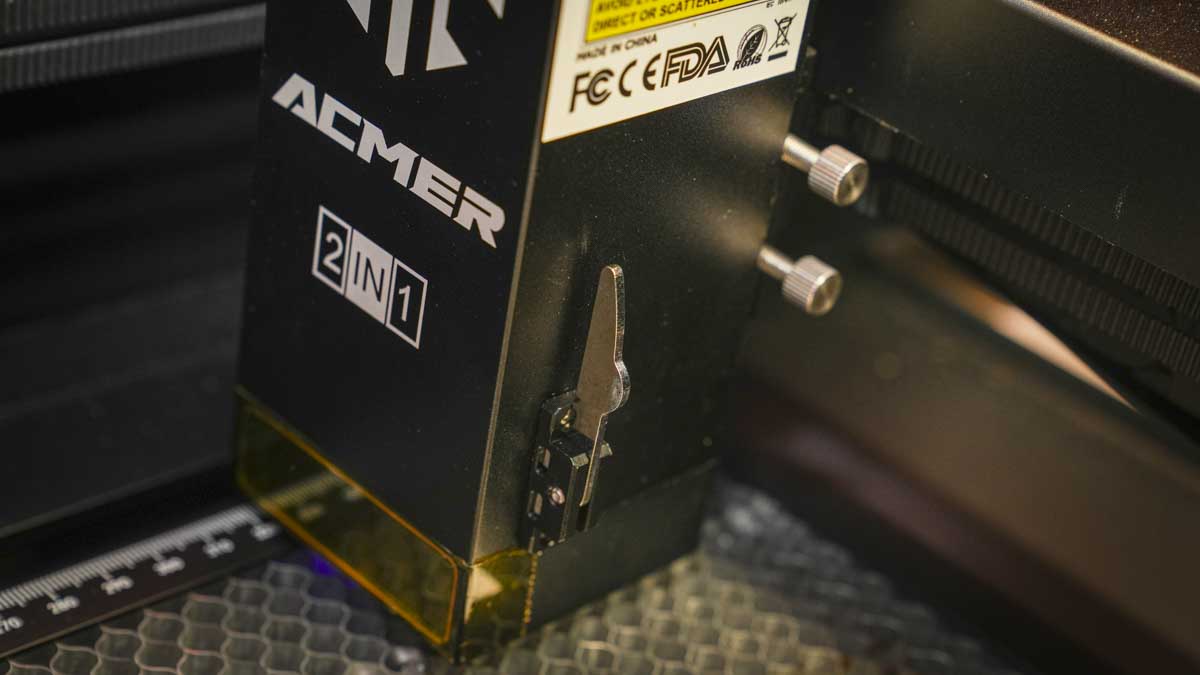
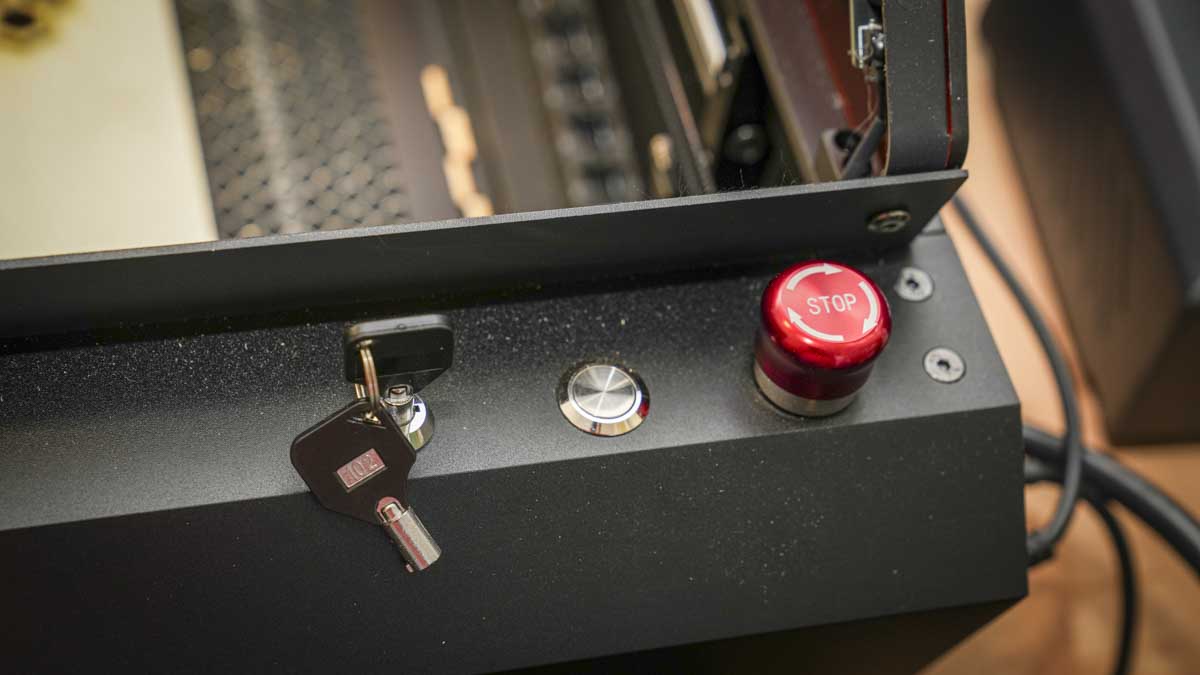

Specifications
Reasons to buy
Reasons to avoid
Sporting both IR and diode engraving in a single unit, the Acmer P3 boasts that modular design that made it deliciously simple to switch between the two during our tests.
For us, this unit nails the basics for workshop use. It's not ultra-fast, but the belt system based on the CoreXY structure (as you'd find on modern 3D printers) does deliver speeds of up to 800mm/s. It even includes a removable tray, so you can engrave longer items up to 4m (although width is fixed at 400mm). There's also a camera built into the lid, which gives an excellent overview of the build area.
But it's that two-in-one design that really shines - especially since all it requires is a literal flick of the switch to change between IR and diode. It made everything so easy. The base unit has a 10W diode engraver, but you can upgrade to 24W or 48W diode laser heads - and I'd recommend opting for at least 24W to get the most out of this two-in-one model.
Read our full Acmer P3 laser engraver review
Best laser engraver for high-volume production

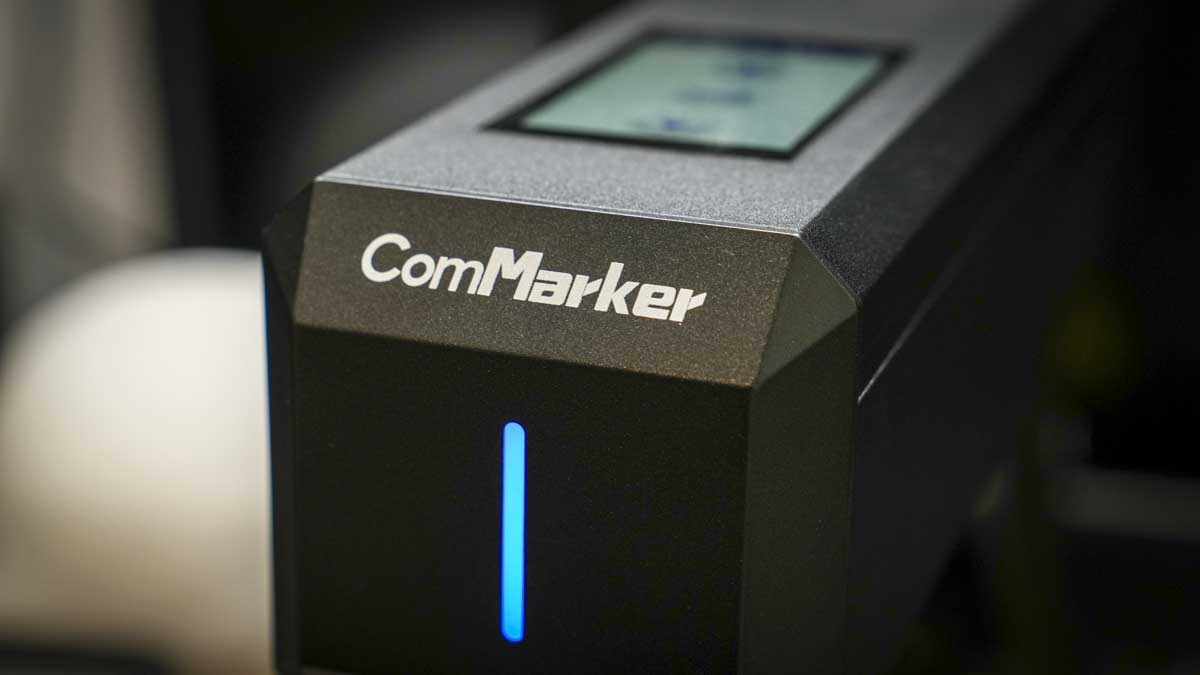
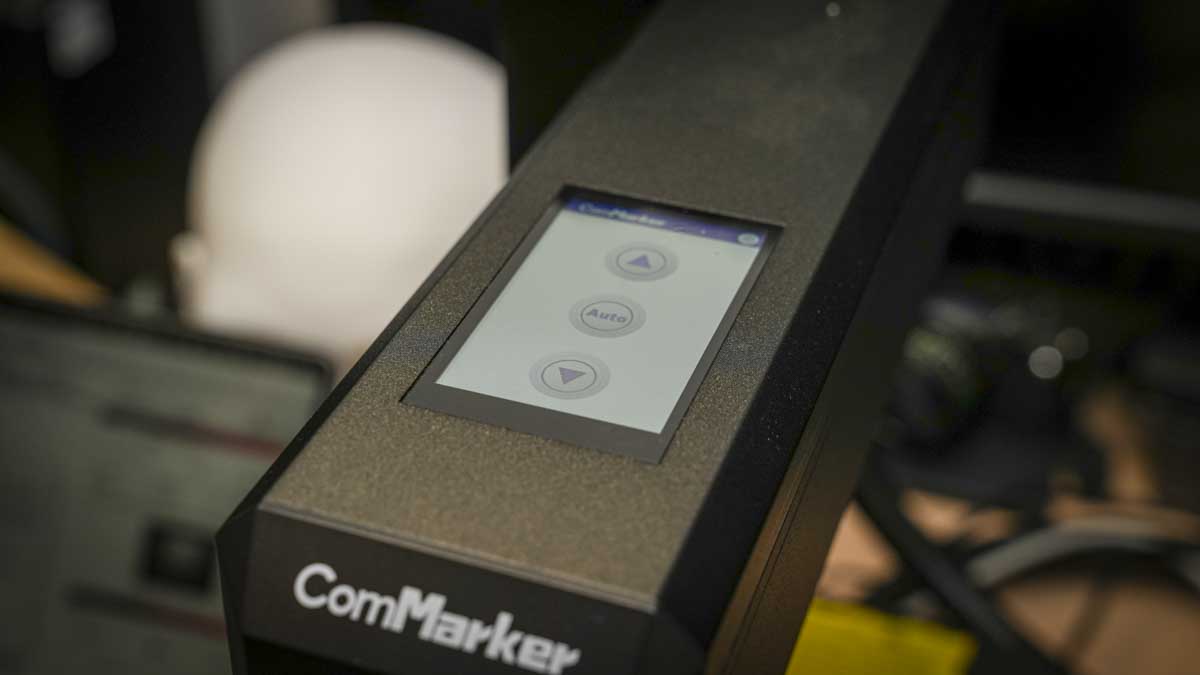
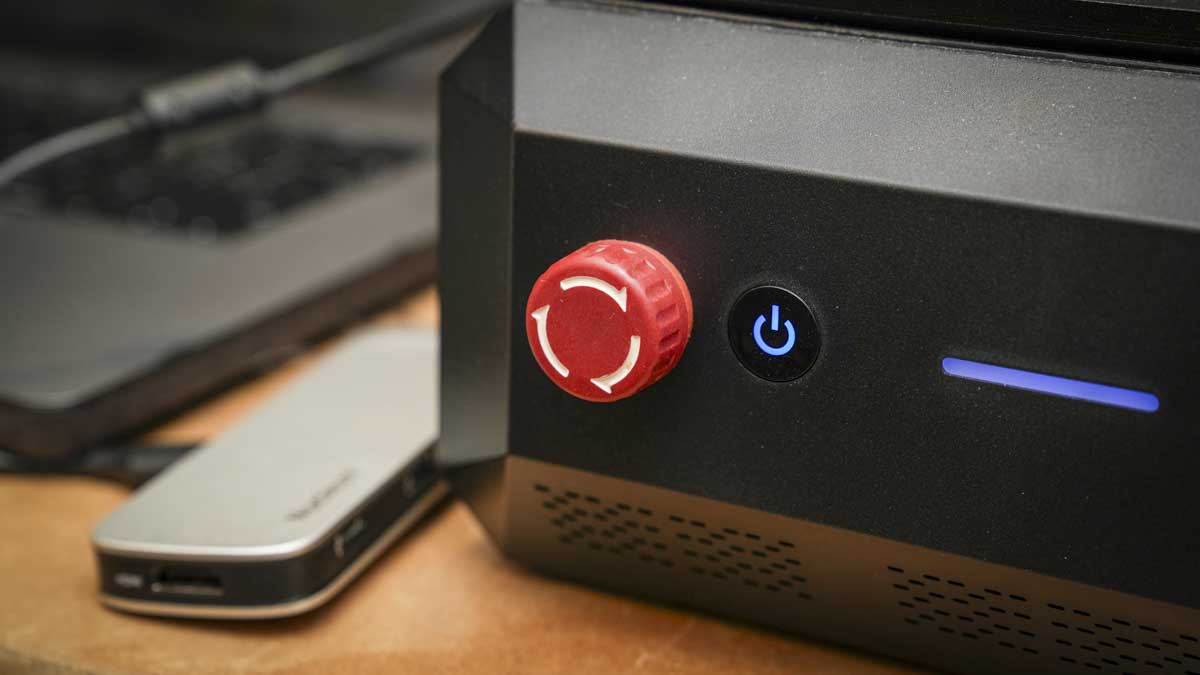



Specifications
Reasons to buy
Reasons to avoid
If you're looking to engrave on all metals, hard plastic, and leather - and to do it fast, the ComMarker B6 MOPA laser engraver is an excellent machine.
There are two models available, with a 20W and 30W laser - opt for the 30W for deeper engravings. Thanks to the fibre laser, it delivered an experience you just can't get from engravers featuring the standard mechanical X-Y gantry. Yes, the work area is somewhat small (just 110 x 110mm), but the optional lenses can boose this to 200 x 200mm, and you can also add a riser for taller objects. So, it's a pretty versatile machine.
A word of warning though - I did find the power of the laser does take some getting used to, and pushing it too hard can result in bending the metal. And due to the design, if you're engraving wood, you'll need to treat the wood with a darker coat before it will respond. For metals, plastic, and leather, however, this isn't an issue at all.
Decked out with optional extras like the rotary accessory, and you have a very flexible, fast, and powerful business-ready laser engraver for higher-volume production runs.
Read our full ComMarker B6 laser engraver review
Best laser engraver for schools
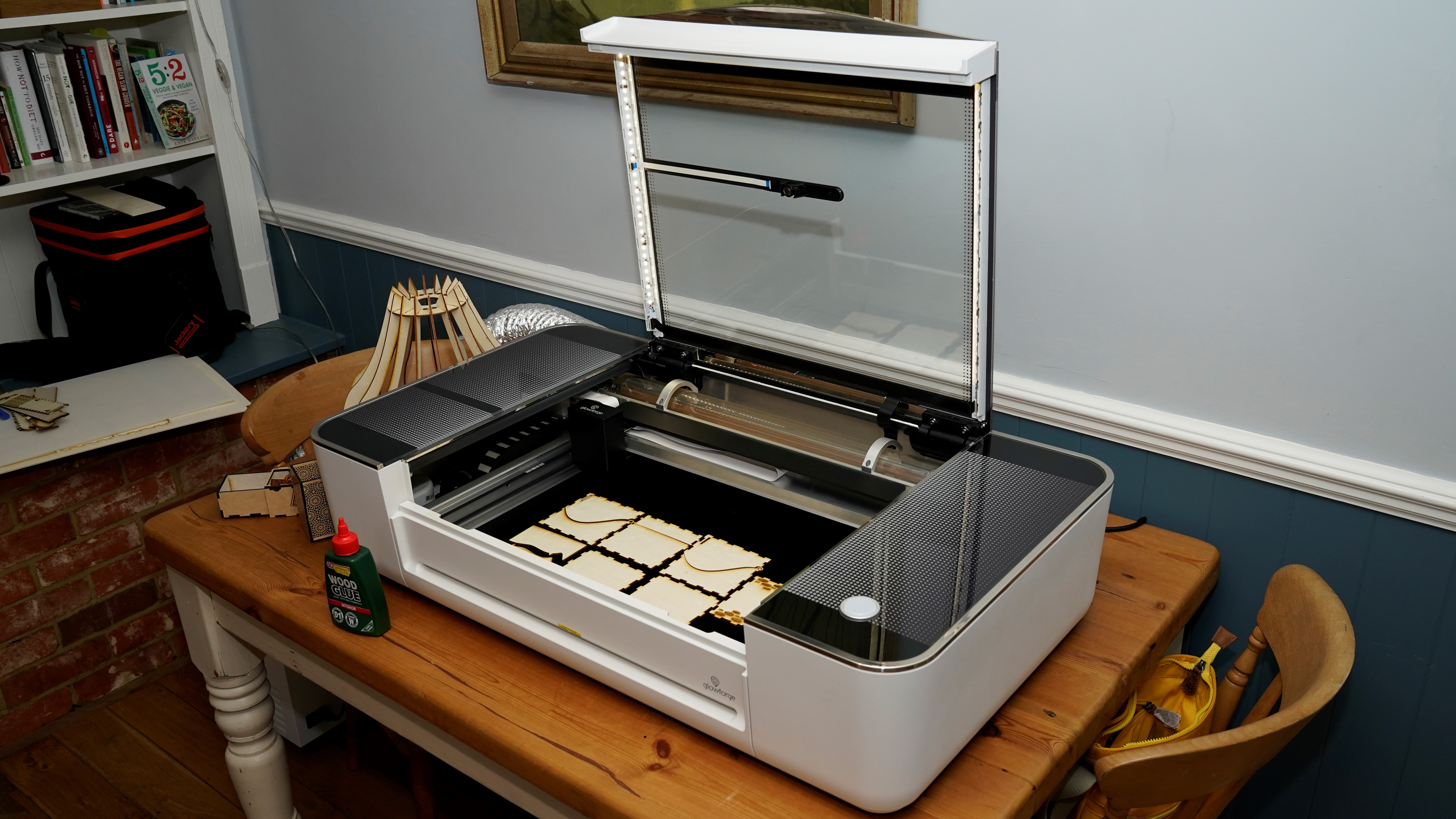




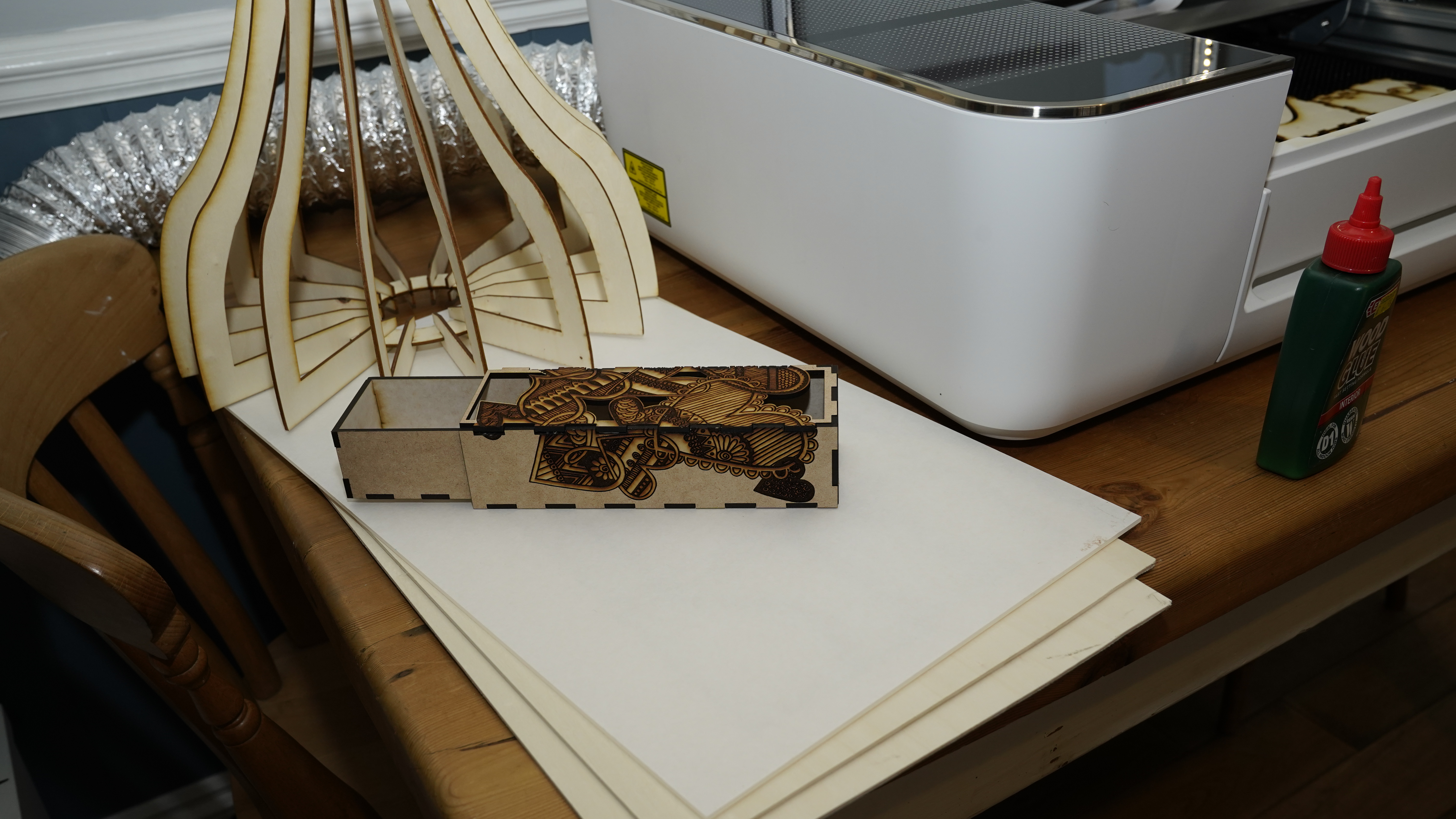
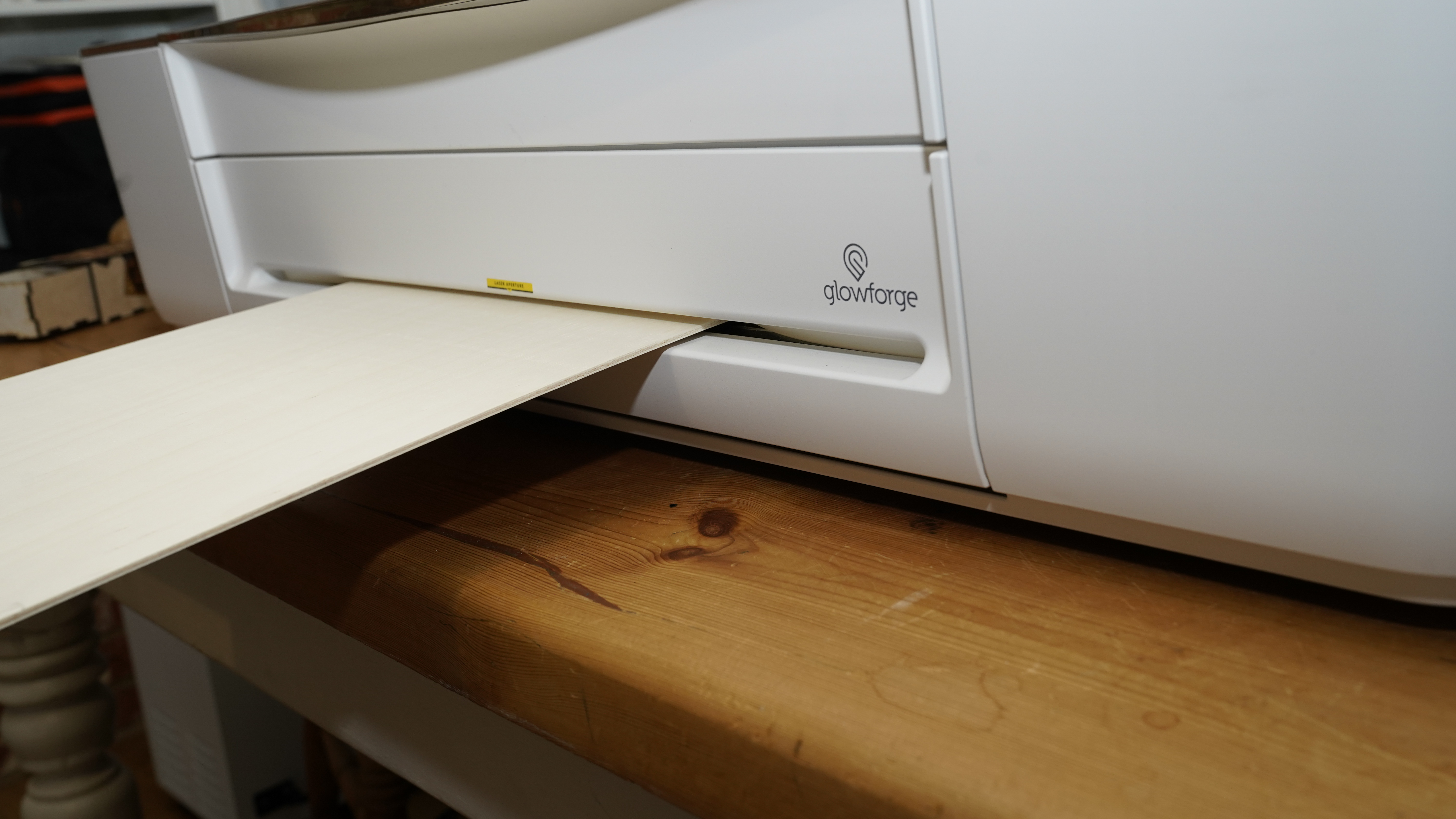
Specifications
Reasons to buy
Reasons to avoid
Glowforge ticks boxes for businesses, schools, and craft enthusiasts. While it's easy to use and top-notch in quality, it does require a reliable Wi-Fi connection, and the Premium subscription isn't exactly pocket-friendly.
Unlike many self-assembly laser cutters, Glowforge is a ready-to-go workshop tool with a sleek design. It's a bit of a unit, so make sure you've got room, especially if you're adding the Air Filter—which, by the way, is a must-have for indoor use.
Temperature is another factor; this isn't a machine to stash in a cold garage. You'll also want to think about materials. Glowforge's own Proofgrade options are great but pricey, so I've often opted for more budget-friendly alternatives.
The Premium subscription is full of perks but might be a stretch for hobbyists, especially given the skimpy seven-day trial. Connectivity is Wi-Fi only, which might put some off, but it's a minor point.
In the classroom or the workshop, Glowforge consistently impresses, breezing through 3mm ply sheets like they're nothing. At home, you'll find its performance unbeatable for the price, even if you opt for the more affordable Glowforge Basic.
Read our full Glowforge Pro laser cutter review
Best laser engravers: FAQs
What is a laser engraver?
A laser engraver is a specialised machine that uses laser technology to etch or engrave designs onto a variety of materials, including wood, metal, acrylic, and glass. Unlike traditional engraving methods that rely on mechanical processes, laser engravers offer a high degree of precision and flexibility. You can go from engraving intricate artwork to cutting through materials like 8mm plywood with a simple change of settings. The laser's accuracy ensures that you get incredibly detailed results, whether you're etching a complex pattern or making precise cuts for a project.
Controlled through either standalone software or directly via apps, these engravers are remarkably user-friendly, although connectivity can sometimes be a sticking point. For instance, Wi-Fi setup might be easier on PC and Android devices compared to Mac and iOS.
With laser engravers, you aren't limited to just flat surfaces; some models offer the ability to engrave cylindrical objects like bottles or glasses, thanks to special attachments. Add-ons like air pumps can also be fitted to help extract fumes produced during the engraving process, making for a safer and cleaner working environment.
Whether you're a DIY enthusiast looking to personalise your creations or a small business owner requiring high-quality branding on your products, laser engraving offers an unparalleled level of design freedom. It's an investment that, despite being pricier than traditional methods, offers a broad range of applications and almost limitless creative potential.
What are the different types of laser engravers?
There are three main laser types on an engraving machine: CO2, diode, and fiber lasers. You'll also see IR lasers, which are a lower-powered type of fiber laser for engraving (but not cutting).
I've compiled a table below to highlight each laser's strengths and weaknesses across both cutting and engraving.
Laser type | Strengths - cut/engrave | Weaknesses - cut/engrave |
|---|---|---|
CO2 | Wood, paper, leather, fabric, clear acrylic, rubber, glass, stone | Bare metal |
Diode | Wood, paper, leather, cardboard, fabric, dark acrylic, stone | Bare metal, clear acrylic, glass |
Fiber | Metal, plastic, stone | Wood, clear acrylic, glass, paper, fabric |
What kind of materials does a laser engraver use?
A laser engraver offers a versatile range of options when it comes to materials, giving both hobbyists and professionals plenty of scope for creativity. Here's a quick rundown:
Woods: From hardwoods like oak and mahogany to softer woods like pine and cedar, most wooden materials are excellent candidates for laser engraving. Keep in mind that softer woods engrave more easily but may also burn quicker, so adjustments to laser settings are essential.
Metals: While not all laser engravers can handle metals, those equipped with high-power fiber lasers can work with aluminium, stainless steel, and even some types of brass and copper. Do note that coated metals may require specialized settings or additional preparation.
Plastics: Acrylics are perhaps the most commonly engraved plastic materials, offering crisp, clean engraving results. However, it's crucial to avoid PVC plastics as they release toxic fumes when engraved.
Leather: Real leather and some synthetic leather types engrave well, offering unique texturing opportunities. Do keep in mind that laser engraving essentially burns the leather, so some colouration changes are to be expected.
Fabrics: From denim to polyester, most fabrics can be engraved, although the results may vary based on the material's thickness and composition.
Glass and Stone: Some laser engravers can etch on glass and stone, although these materials usually require special considerations regarding laser focus and speed to prevent cracking or chipping.
Paper and Cardboard: These materials are the easiest to work with but are also the most delicate. They're great for intricate designs but remember that the laser can easily burn through, so adjustments are often needed.
When choosing a laser engraver, it's crucial to think about the types of materials you'll be working with most often. Not all engravers can handle every material, so do some homework to ensure your chosen machine meets your needs.
Do laser engravers use a lot of electricity?
The electrical consumption of a laser engraver varies significantly based on its size, power rating, and usage frequency. Here's a general guide:
Small Desktop Models: Low-power units designed for hobbyists usually consume less electricity, comparable to a standard PC. These units often operate in the 30W to 50W range.
Mid-Range Models: These laser engravers, often seen in small-scale businesses, have power ratings between 60W to 100W. Their power consumption can be likened to that of a high-end gaming PC or a small household appliance like a microwave.
Industrial Models: High-power engravers used in commercial settings can go up to 150W or even higher. These machines have the electrical consumption similar to industrial machinery and are best operated with a dedicated power source to ensure optimal performance.
Additional Considerations: Cooling Systems: Some laser engravers come with built-in cooling systems, which also consume electricity. However, they're generally not huge power drains.
Duration of Use: Naturally, the longer you run the engraver, the more electricity it will use. Some professional setups may run for several hours at a time, thus accumulating a higher electrical bill.
Standby Mode: Some engravers continue to consume power even when not actively engraving, especially if they maintain a heated bed or keep internal systems running.
While they're not the most energy-efficient machines around, they're generally not exorbitant in their power needs unless you're running a high-powered unit continuously. If energy consumption is a significant concern for you, it would be wise to check the specific power ratings and operational costs associated with the models you're considering.
What is the most profitable thing to make with a laser engraver?
The profitability of laser-engraved items can vary greatly depending on your target market, but some popular categories stand out:
Personalised Items: One of the most lucrative avenues is personalisation. Custom-engraved phone cases, cutting boards, jewellery, and even pet tags can fetch a premium price because they offer a unique, personalised experience for the customer.
Home Décor: Laser-engraved signs, wall art, and custom furniture markings are increasingly popular. When executed with skill, these items can command high prices, particularly if you use high-quality materials.
Corporate and Promotional Items: Corporate gifts, like custom-engraved pens, keychains, and awards, offer high profitability because businesses often place large orders and are willing to pay a premium for quality work.
Craft Supplies: Laser-cut stencils, engraving templates, and specialised crafting tools are in demand among hobbyists and can be sold at a high markup.
Small-Scale Manufacturing: If you've got a keen eye for design, creating branded or original items for sale, like coasters or trinket boxes, can also be quite profitable. When sold in sets, these can add up quickly.
Art and Collectibles: Laser-engraved art pieces can be extremely profitable, especially limited editions or intricate designs that showcase the capabilities of both the machine and the artist.
Seasonal Items: Don't underestimate the power of seasonal or event-specific items. Custom baubles at Christmas or engraved champagne flutes for New Year's Eve can yield excellent profits if timed well.
Remember, the key to profitability isn't just the item itself but how you market it. High-quality craftsmanship, excellent marketing, and superb customer service can make almost any laser-engraved item profitable.
How to choose the best laser engraver for you
Choosing the best laser engraver for your needs involves a few critical considerations. Here's what I recommend checking.
Laser type
Above, I've listed the key strengths and weaknesses when it comes to cutting and engraving on different materials.
In general, I recommend CO2 laser engravers if you're chiefly working with clear acrylic or glass. Choose a diode laser engraver if you usually work with wood and leather. And select a fiber laser engraver for working on metal.
Resolution
Resolution is vital for detail work. Higher resolution engravers will offer you finer details but usually come at a higher cost and may take longer to complete a project. On the flip side, lower resolution machines are faster and less expensive but compromise on intricate detailing.
Accessories
A lot of modern laser engravers have a wealth of accessories to choose from, from higher-powered laser heads to cameras. If you're thinking about expanding your engraving machine's abilities as you expand your business (or hobby), it's worth exploring what options are available to you.
Safety features
Since you're working with lasers, eye protection and fume extraction are essential. Some units offer enclosures and built-in safety measures, but these often come at a higher price point.
Price & value
I see laser engravers at a wide range of prices - typically, the more powerful the machine is, the more it will cost. So you'll want to balance those costs against your use. In general, a mid-range laser engraver with optional upgrades will offer the best value for crafters and hobbyists, while those who want a laser engraver for commercial use will do well to invest upfront for a speedier, more precise machine.
How we test the best laser engravers
Unboxing and first impressions
My testing process begins with the initial assembly and set-up of each laser engraver. I explore how straightforward or intricate this phase is and how long it takes for calibration, setting the groundwork for the expertise level required for operation. During this time, I'm also looking at the design and dimensions of each unit.
Connectivity and software
Next, I evaluate connectivity options, investigating how effortlessly the laser engraver synchronises with various software platforms. This ensures that you won't get bogged down by cumbersome tech hitches.
Features and accessories
Features and accessories come under the spotlight next. I always dive into what each machine offers, from advanced engraving options to additional attachments like air pumps for fume extraction or specialized lenses for intricate details. Some laser engravers come equipped with additional features such as internal cameras. These get special attention, as they often add considerable value and functionality, for example, allowing for more precise cuts.
Engraving and cutting
The heart of my testing process lies in assessing the quality of both engraving and cutting. I examine depth, clarity, and uniformity in engravings and measure the speed and precision of cuts. This gives me a rounded view of the machine's full capabilities.
Final analysis
By the end of this extensive evaluation, I have a clear picture of how each laser engraver performs on multiple fronts - from ease of use and versatility to engraving and cutting prowess. I can then deliver a balanced, in-depth reviews that cater to both amateur enthusiasts and professionals, helping you make an educated choice for your engraving ventures.
Sign up to the TechRadar Pro newsletter to get all the top news, opinion, features and guidance your business needs to succeed!
Alastair is a photographer, filmmaker and tech writer who has been working in the publishing industry since the late 1990s. For more than 25 years he has covered photography, video and technology across Future's photography, technology and gaming brands. He runs a photography and video production company and lectures in TV and film. He can usually be found testing mini PCs or prototyping and prop building with the aid of 3D printing.
- Steve ClarkB2B Editor - Creative & Hardware